Transform your outdoor space into a serene oasis with thoughtfully designed pond landscaping that reflects your personal style and enhances your garden's natural beauty. Modern pond landscaping has evolved beyond simple water features to encompass complete design themes that integrate seamlessly with your home's architecture and surrounding landscape. Whether you prefer the clean lines of contemporary design, the tranquil atmosphere of Japanese-inspired gardens, or the vibrant ecosystem of wildlife-friendly spaces, each approach offers unique benefits for creating your perfect backyard retreat.
1. Japanese Zen Pond Landscaping with Meditation Elements
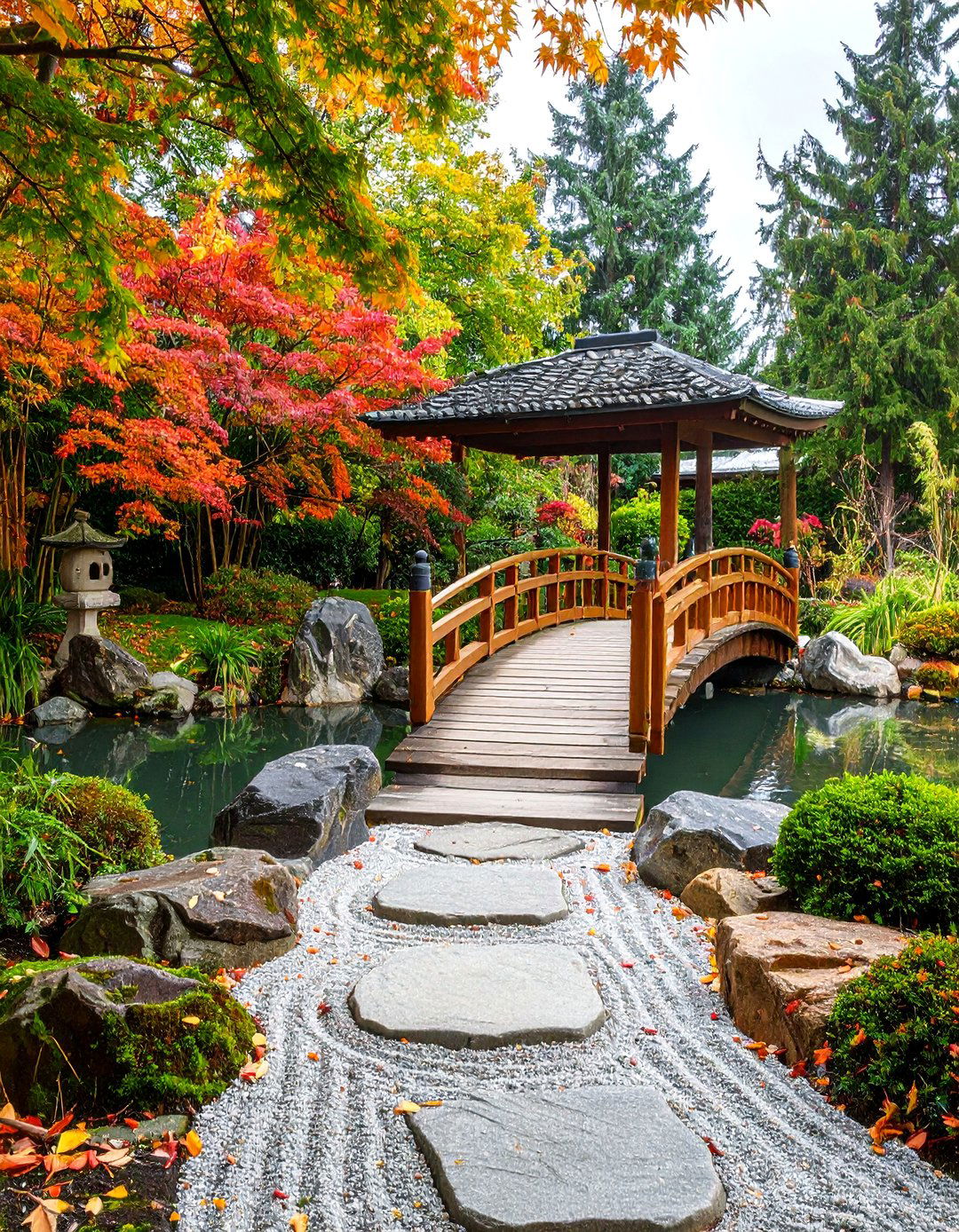
Creating a tranquil Japanese zen pond landscaping design centers around the principles of simplicity, balance, and natural harmony. This approach features clean-lined rectangular or circular ponds surrounded by carefully arranged river rocks and smooth pebbles in varying shades of gray and black. Minimalist plantings include Japanese maples, bamboo, and ornamental grasses positioned asymmetrically to create visual interest without overwhelming the space. Traditional elements like stone lanterns, wooden bridges, and strategically placed boulders representing mountains add authentic character. The surrounding area incorporates raked gravel patterns symbolizing water ripples, while a simple wooden bench provides a meditation spot. Subdued lighting illuminates key features during evening hours, enhancing the contemplative atmosphere that makes this pond landscaping style perfect for stress relief and mindful relaxation.
2. Modern Contemporary Pond Landscaping with Geometric Lines
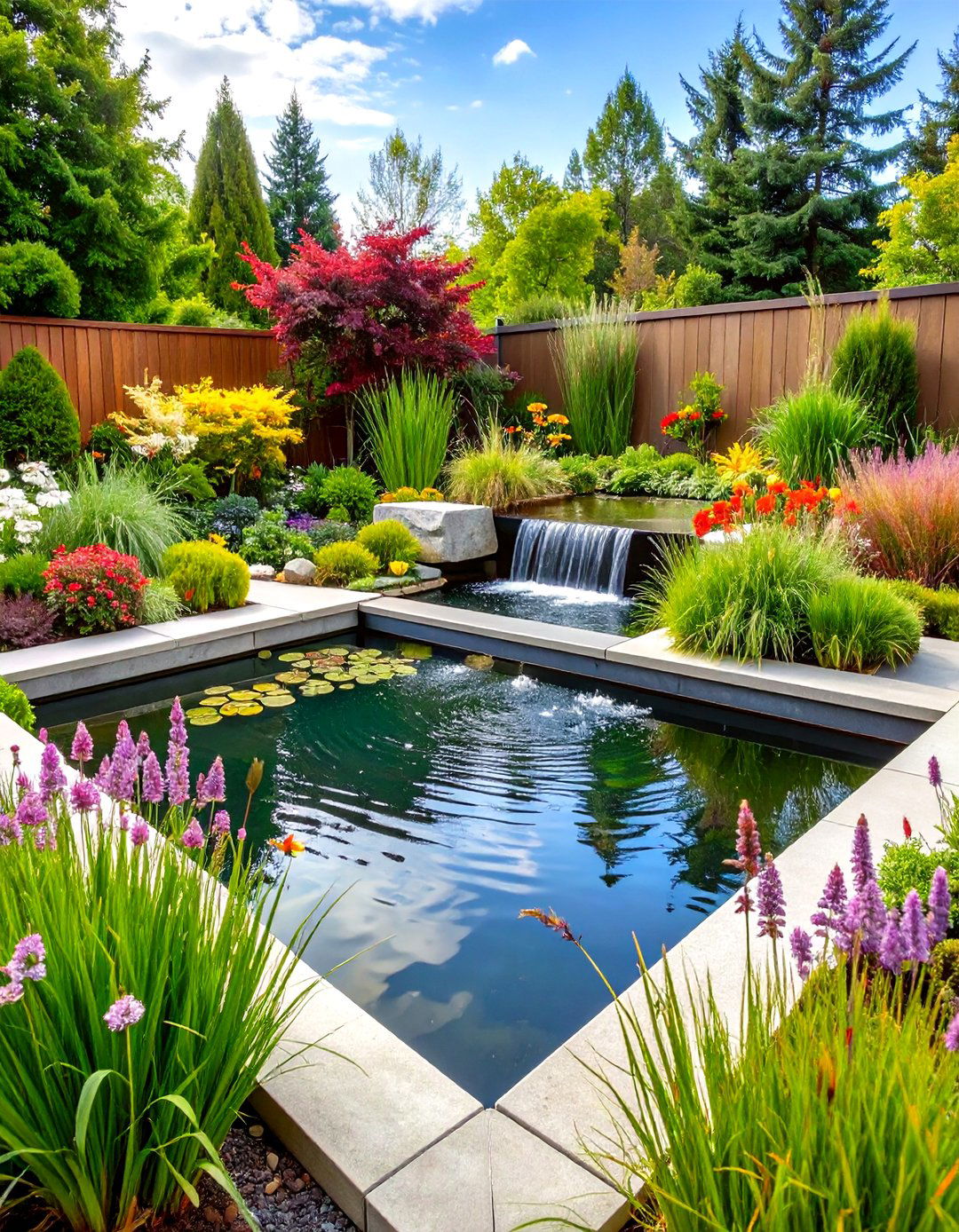
Contemporary pond landscaping embraces bold geometric shapes and sleek materials to create striking architectural water features that complement modern homes. This design style typically features rectangular or square ponds with sharp, defined edges constructed from materials like concrete, steel, or natural stone with crisp finishes. The surrounding landscape uses structured plantings of ornamental grasses, succulents, and architectural plants arranged in linear patterns or geometric groupings. Hardscaping elements include polished concrete pathways, metal planters, and minimalist furniture pieces that echo the pond's clean lines. Water features remain simple yet dramatic, often incorporating flat spillways or linear fountains that create smooth sheets of falling water. Lighting plays a crucial role, with LED strips integrated into the pond's edges and uplighting for surrounding plants, creating a sophisticated evening ambiance that transforms the space into an outdoor architectural statement.
3. Wildlife Native Pond Landscaping for Ecosystem Support
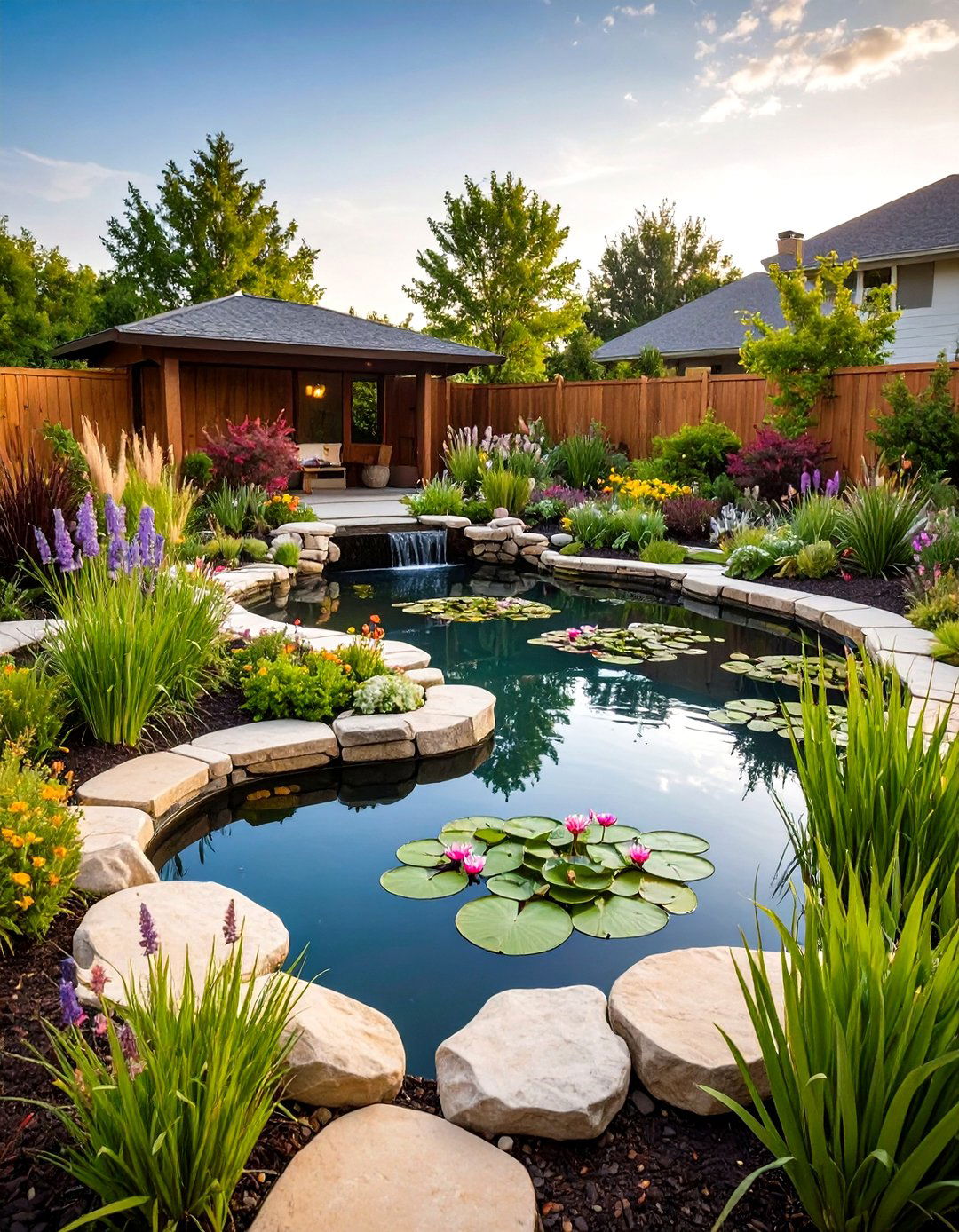
Wildlife-focused pond landscaping creates a thriving ecosystem using native plants and natural design principles that support local biodiversity. This approach features irregularly shaped ponds with varying depths and gentle sloping edges that allow easy access for birds, amphibians, and small mammals. Native marginal plants like cattails, water lilies, and native irises provide shelter and food sources, while submerged plants such as hornwort and water violet maintain oxygen levels naturally. The surrounding area incorporates native wildflowers, grasses, and shrubs that attract pollinators and provide year-round habitat. Natural materials like local stone and driftwood create basking spots and hiding places for wildlife. This pond landscaping style requires minimal maintenance once established, as the balanced ecosystem naturally filters water and controls algae growth. The result is a dynamic, ever-changing landscape that brings the beauty of local nature directly to your backyard while supporting conservation efforts.
4. Formal Symmetrical Pond Landscaping with Classical Elements
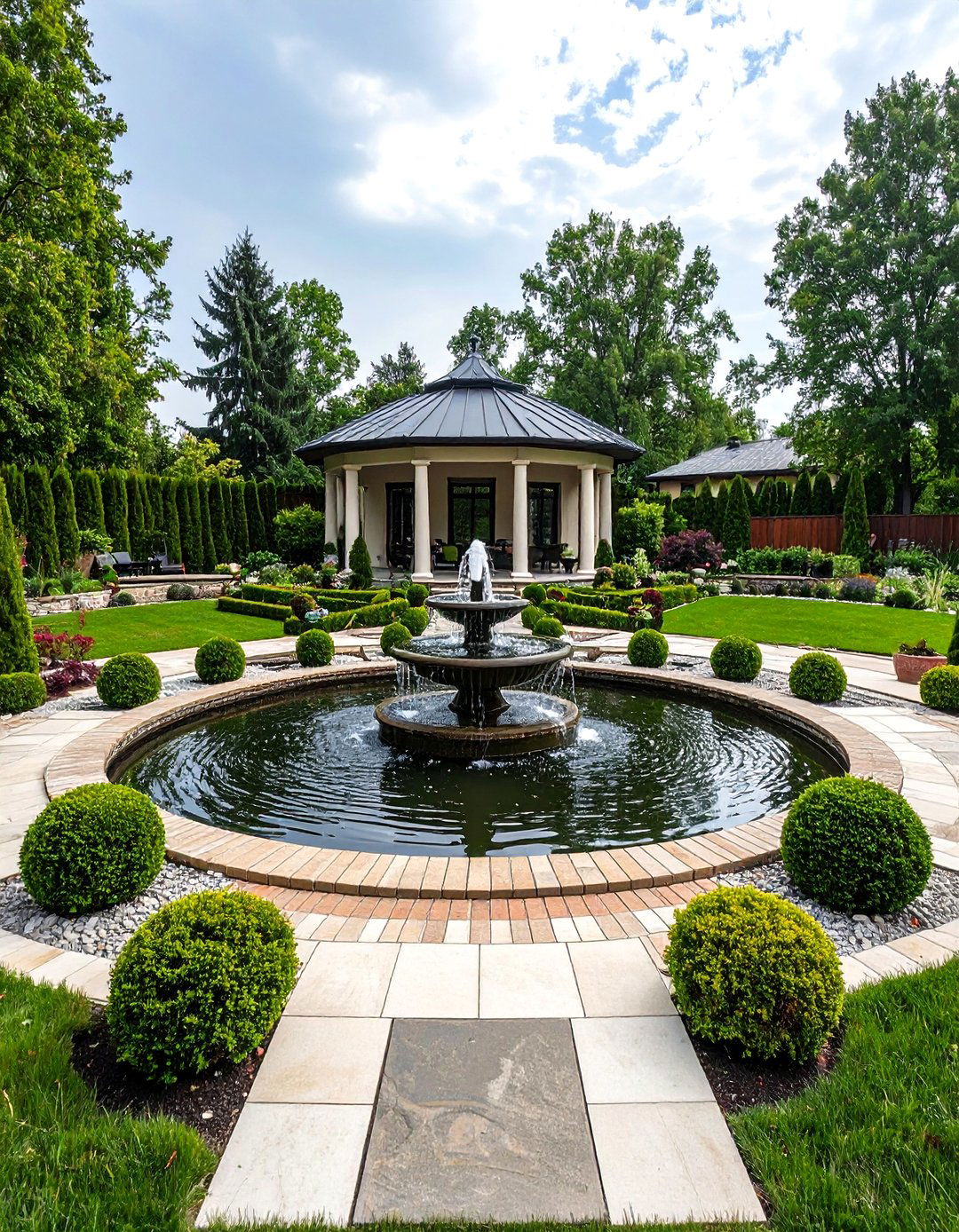
Formal pond landscaping draws inspiration from European garden traditions, featuring perfectly symmetrical designs that create a sense of order and elegance. This style typically centers around geometric pond shapes like circles, rectangles, or octagons, positioned along central axes with mirrored plantings on either side. Structured elements include neatly trimmed boxwood hedges, topiary spheres, and precisely planted flower beds that maintain their form throughout the seasons. Traditional materials like brick edging, natural stone coping, and gravel pathways provide classic beauty and durability. Focal points such as fountains, statuary, or ornamental urns serve as centerpieces that draw the eye and anchor the design. The surrounding landscape features repeated plant groupings and carefully maintained lawn areas that emphasize the formal structure. This pond landscaping approach requires regular maintenance to preserve its crisp appearance but rewards homeowners with timeless elegance that increases property value and creates impressive outdoor entertaining spaces.
5. Cottage Garden Pond Landscaping with Abundant Flowering Plants

Cottage-style pond landscaping combines the charm of informal English gardens with the tranquil beauty of water features, creating romantic outdoor spaces filled with color and fragrance. This approach features naturally shaped ponds surrounded by overflowing borders of perennial flowers like lavender, roses, delphiniums, and hollyhocks that bloom in succession throughout the growing season. Traditional materials such as weathered stone, vintage brick, and rustic wooden elements create authentic cottage character. Winding pathways made from irregular flagstone or gravel connect different garden areas while maintaining the informal, evolved-over-time appearance. Climbing plants like clematis and honeysuckle scramble over arbors and fences, adding vertical interest and creating cozy enclosures. Water plants include classic choices like water lilies and marsh marigolds that complement the cottage aesthetic. This pond landscaping style embraces controlled chaos, where plants are allowed to self-seed and spread naturally, creating a garden that feels established and inviting rather than overly designed.
6. Koi Pond Landscaping with Oriental Garden Features
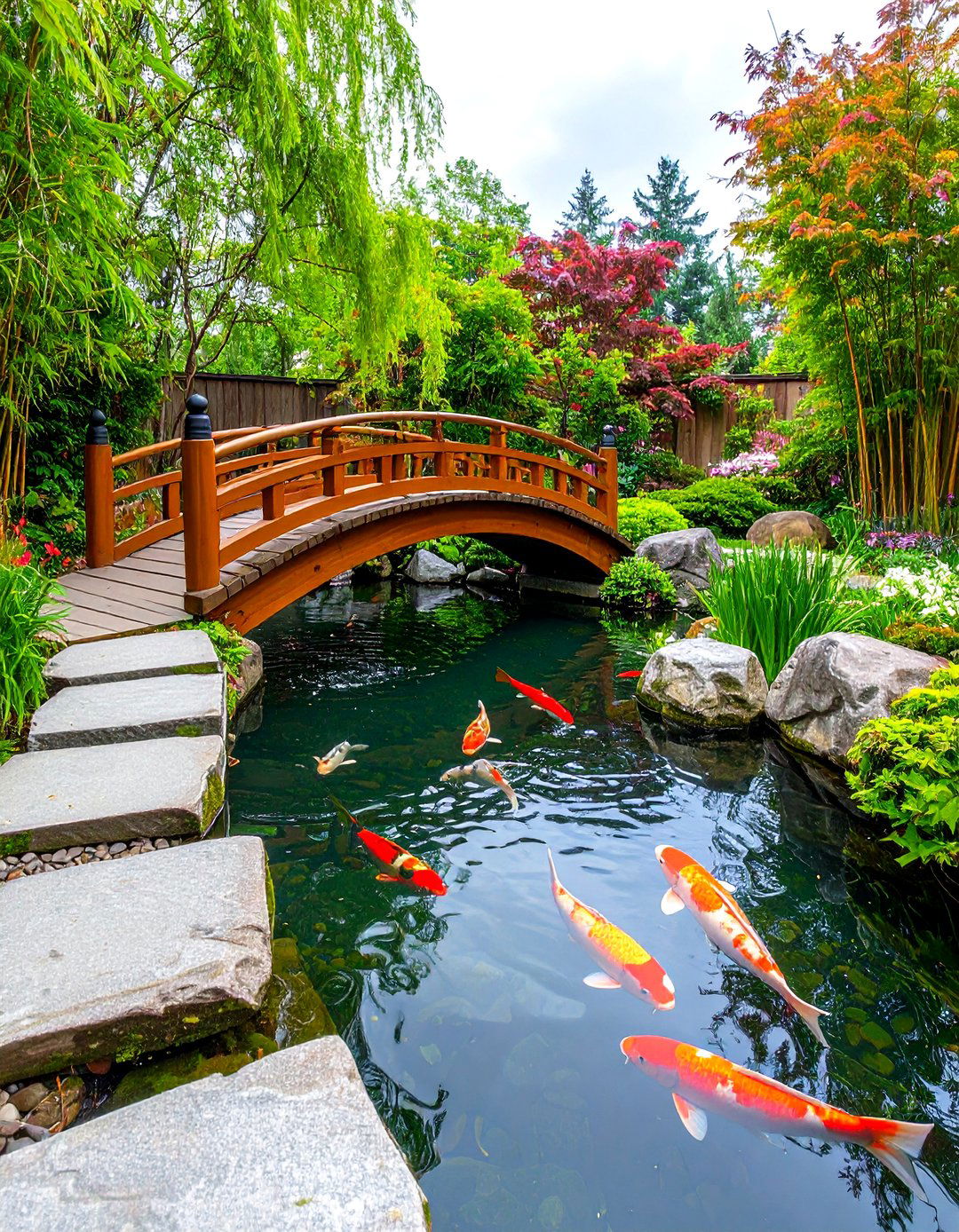
Specialized koi pond landscaping focuses on creating optimal conditions for colorful fish while incorporating traditional Asian design elements that celebrate the harmony between water and life. This design requires deeper ponds with sophisticated filtration systems hidden beneath decorative elements like stone formations or planted areas. The pond shape often follows natural curves enhanced by strategically placed boulders and driftwood that create territorial boundaries for the fish. Surrounding plantings include Japanese maples, bamboo, ornamental grasses, and flowering shrubs like azaleas that provide seasonal interest without dropping excessive debris into the water. Traditional features such as arched bridges, stepping stones, and pagoda-style structures add authentic cultural elements. The landscape design emphasizes viewing areas with comfortable seating positioned to observe the fish's graceful movements and vibrant colors. Lighting systems illuminate both the water and surrounding plants, creating stunning evening displays that showcase the koi as living artwork within the carefully composed landscape setting.
7. Mediterranean Pond Landscaping with Drought-Tolerant Elements
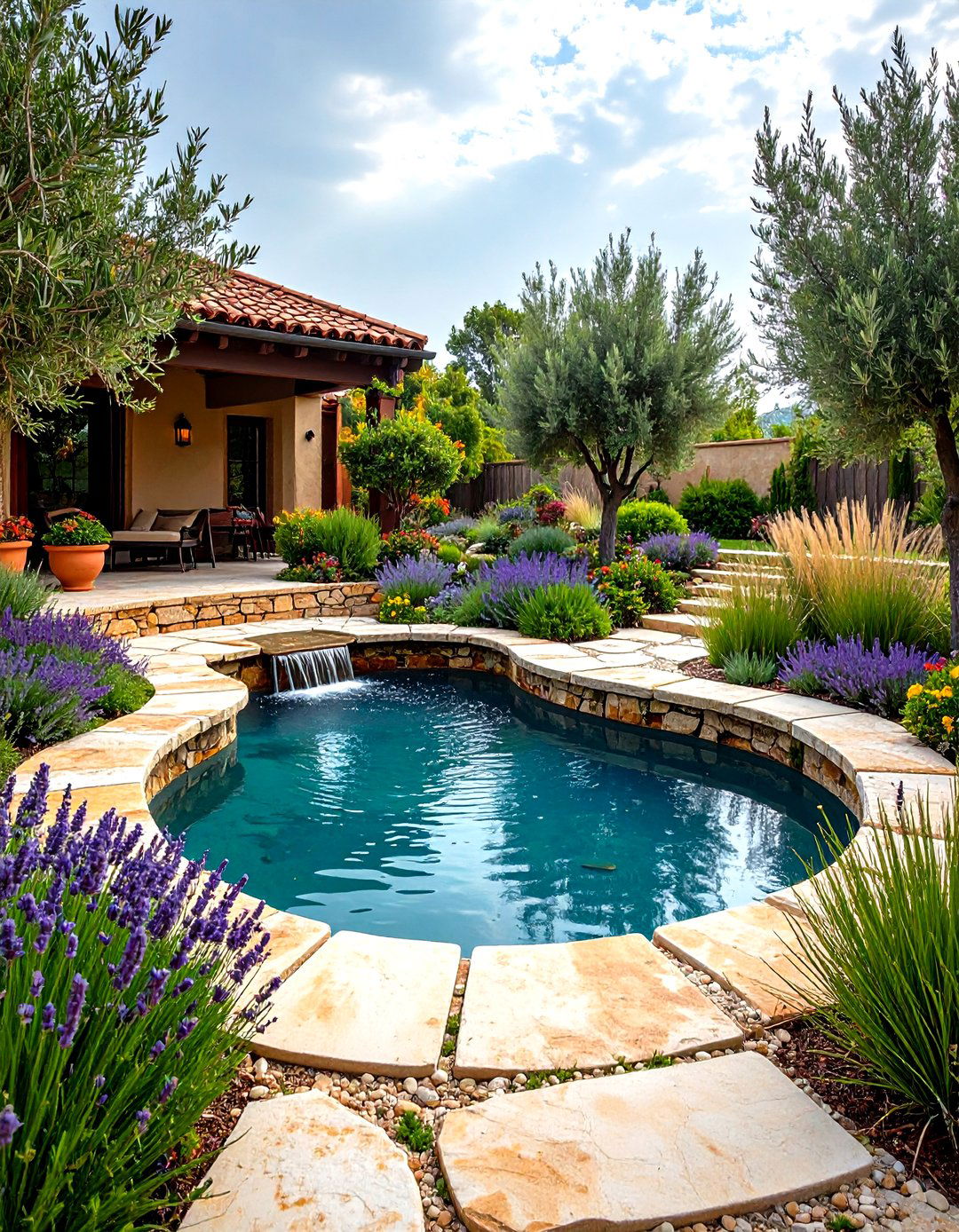
Mediterranean-inspired pond landscaping combines water features with drought-resistant plants and warm-climate design elements that create resort-like outdoor environments. This style features naturalistic pond shapes surrounded by terraced stone walls, gravel gardens, and sculptural plants like olive trees, lavender, and ornamental grasses that thrive in sunny conditions. Traditional materials include natural limestone, terra cotta, and decorative tiles that reflect Mediterranean architectural heritage. The design often incorporates multiple levels connected by stone steps or retaining walls that create interesting elevation changes and planting opportunities. Water features might include spillways, bubbling urns, or small waterfalls that add movement and sound while conserving water through recirculation. Aromatic herbs like rosemary, thyme, and sage planted throughout the area create sensory gardens that engage multiple senses. This pond landscaping approach works particularly well in warmer climates where traditional lawn areas struggle, offering an elegant alternative that requires less water while providing year-round beauty and Mediterranean charm.
8. Rock Garden Pond Landscaping with Alpine Plant Collections
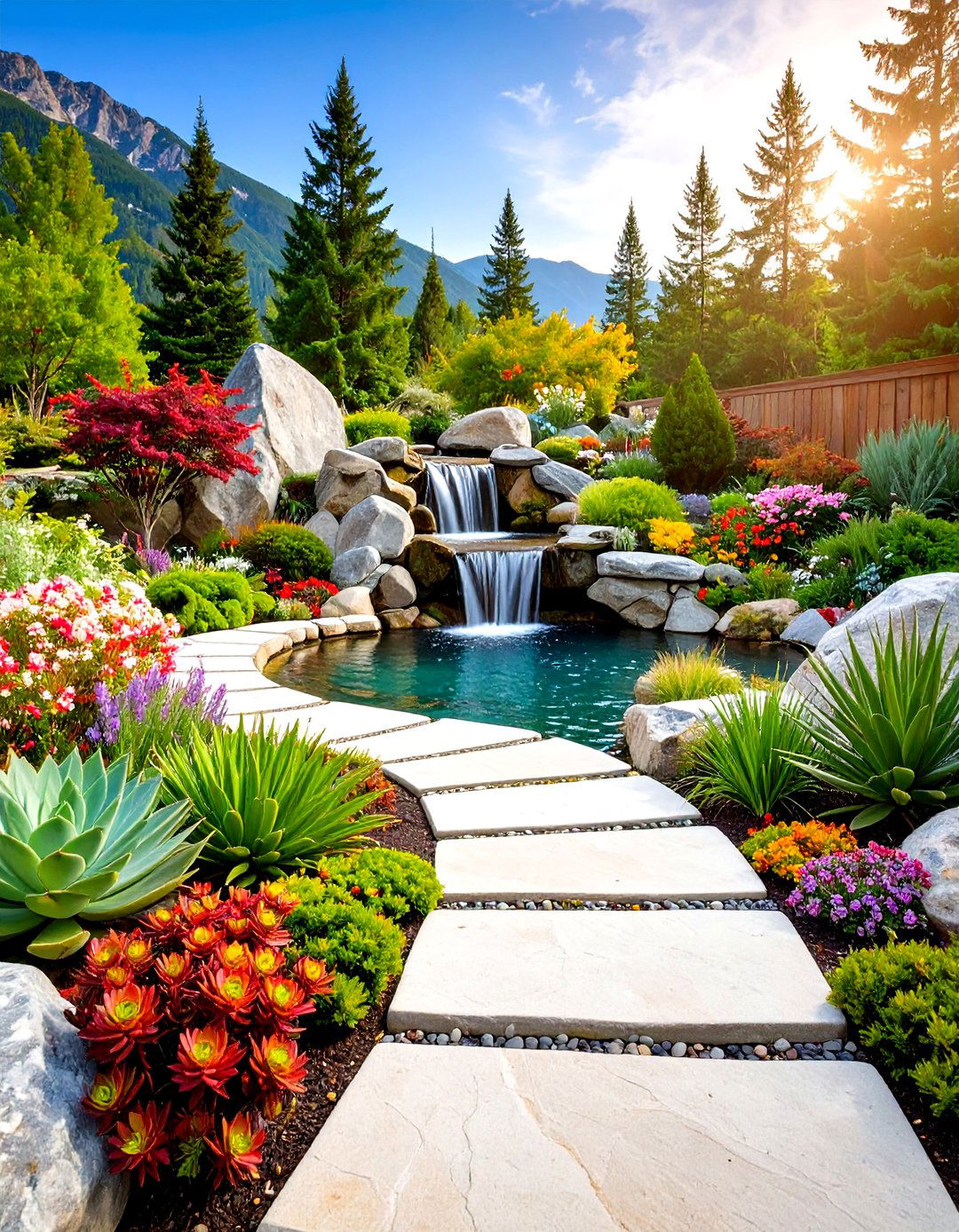
Rock garden pond landscaping creates dramatic mountainous landscapes in miniature, featuring natural stone formations and specialized plant collections that thrive in well-drained conditions. This design style incorporates varying sizes of stones arranged to mimic natural rock outcroppings, with the pond nestled into lower areas where water would naturally collect. Alpine plants, succulents, and dwarf conifers fill crevices between stones, creating layers of texture and seasonal interest throughout the year. The pond itself often features a naturalistic shape with stone edges that appear to be natural formations rather than constructed features. Small waterfalls or cascades flow between rock levels, creating the sound and movement of mountain streams. Pathways consist of flat stones placed strategically to allow close observation of plant details and water features. This pond landscaping style requires excellent drainage and careful plant selection but rewards gardeners with a unique landscape that changes dramatically with seasons and provides habitat for specialized wildlife adapted to rocky environments.
9. Tropical Pond Landscaping with Lush Foliage and Exotic Plants
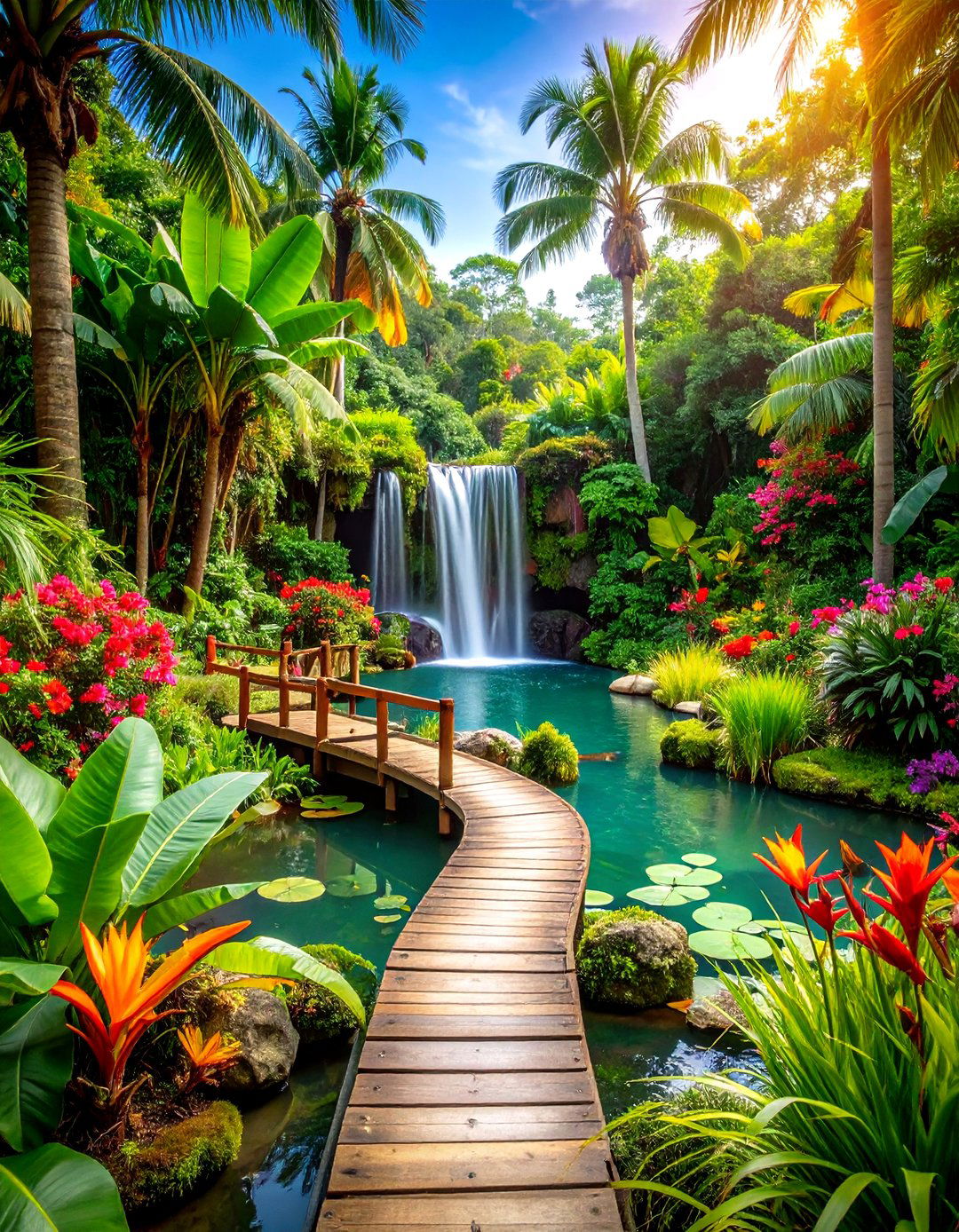
Tropical pond landscaping transforms outdoor spaces into lush jungle-like environments featuring bold foliage plants and vibrant colors that create year-round paradise atmospheres. This style emphasizes large-leafed plants like elephant ears, banana trees, and bird of paradise arranged in layered groupings that provide natural screening and exotic beauty. The pond design often includes irregular shapes with multiple depths and planted islands that support both tropical water plants and marginal species. Natural materials like bamboo, teak, and river stones create authentic tropical character while providing functional elements like bridges, seating, and pathways. Water features frequently incorporate cascading waterfalls or bubbling springs that create the humid microclimates that tropical plants prefer. Bright flowering plants like hibiscus, bougainvillea, and tropical water lilies add spectacular color throughout the growing season. This pond landscaping approach works best in warm climates or protected courtyards where tender plants can thrive, creating private retreats that feel like exotic vacation destinations.
10. Desert Pond Landscaping with Xerophytic Plant Design
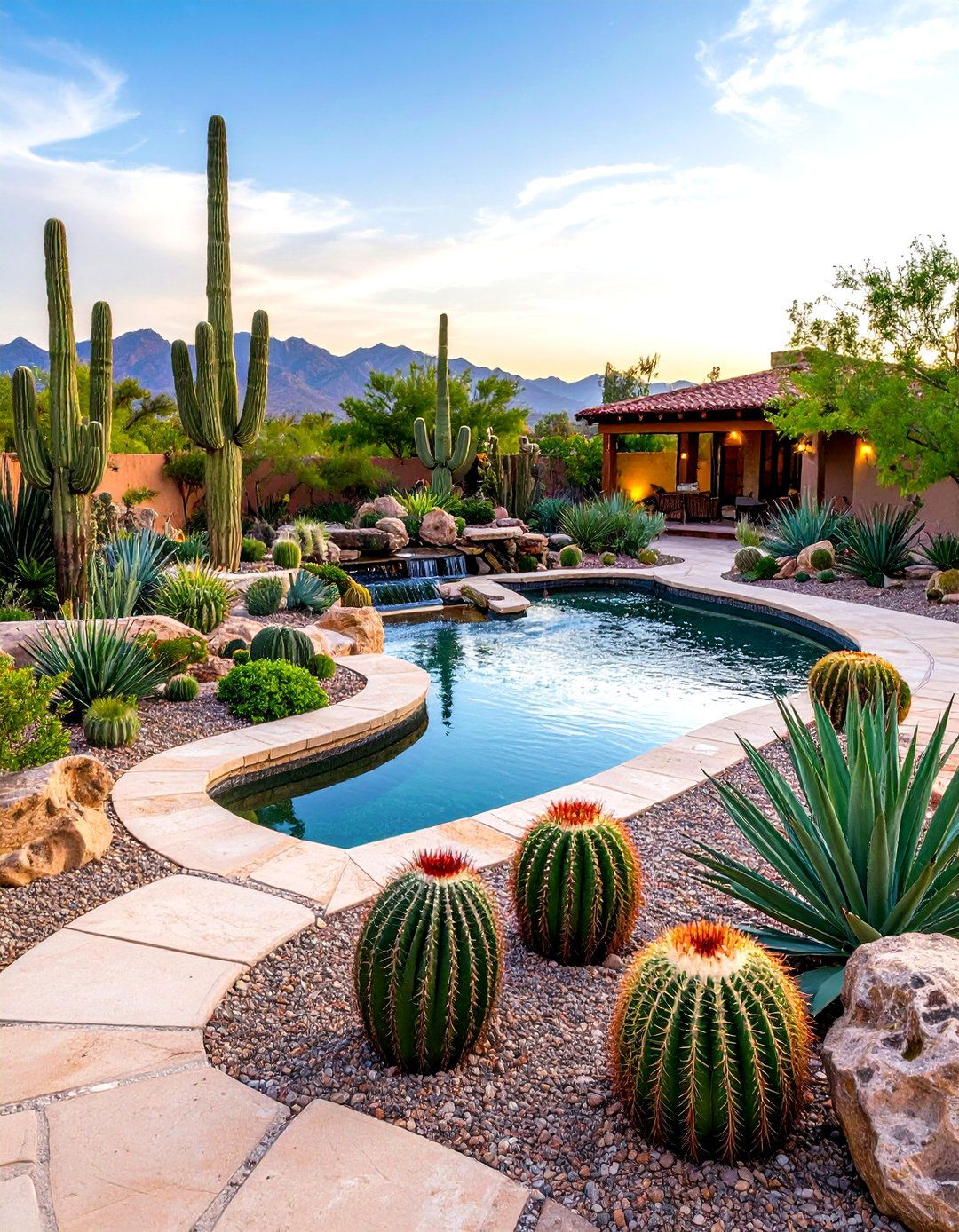
Desert pond landscaping creates striking contrasts between water features and arid landscape plants, resulting in oasis-like environments that celebrate the beauty of dry climate vegetation. This approach features architectural pond shapes with clean edges surrounded by gravel gardens, decomposed granite pathways, and carefully arranged collections of cacti, succulents, and desert-adapted shrubs. The design often incorporates large specimen plants like agaves, barrel cacti, and Joshua trees as sculptural focal points that provide dramatic silhouettes against sky and water. Natural materials include sandstone, desert rocks, and metal elements that complement the harsh beauty of desert environments. Water features remain simple but effective, often featuring single-source springs or gentle overflows that conserve water while providing essential moisture for wildlife. Evening lighting creates spectacular effects by illuminating plant forms and water surfaces, transforming the landscape into a dramatic nighttime display. This pond landscaping style offers sustainable beauty in water-restricted areas while requiring minimal maintenance once established.
11. Cottage Herb Pond Landscaping with Culinary Garden Integration
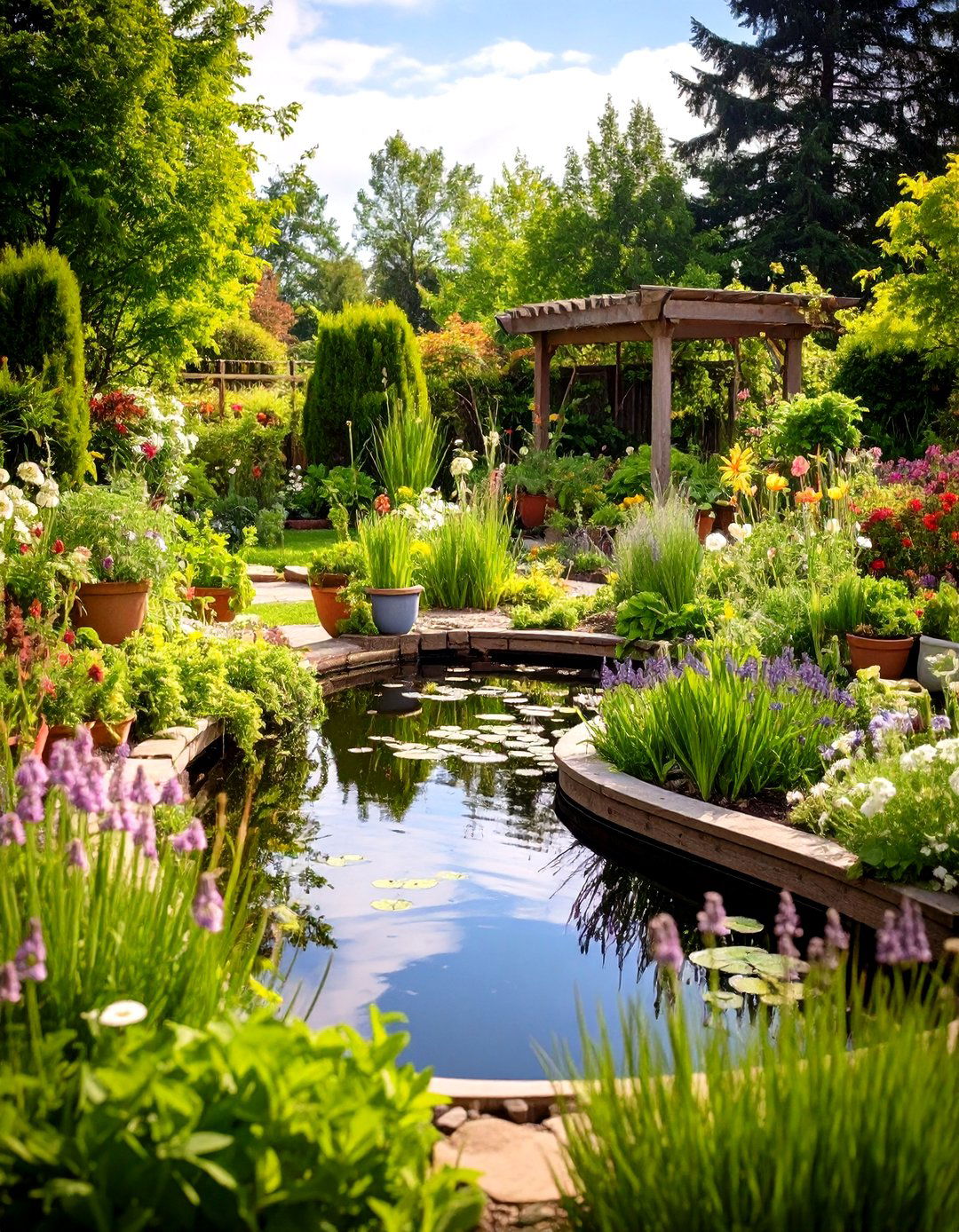
Cottage herb pond landscaping combines productive gardening with water features, creating functional outdoor spaces where culinary herbs and edible plants surround reflective pools. This design approach features informal pond shapes integrated into kitchen garden layouts, with herbs like mint, watercress, and parsley growing in boggy areas around pond edges. Traditional cottage elements include rustic wooden raised beds, gravel pathways, and vintage containers repurposed as planters that add authentic character. The pond serves multiple purposes, providing water for irrigation, habitat for beneficial insects, and a peaceful focal point within working garden spaces. Surrounding areas feature established herb collections organized by culinary use, with aromatic plants like lavender, rosemary, and sage creating sensory experiences during garden maintenance and harvesting. Small seating areas positioned near the water allow for rest and contemplation during garden work. This pond landscaping style appeals to gardeners who value both beauty and function, creating outdoor spaces that nourish body and soul while providing fresh ingredients for cooking.
12. Woodland Pond Landscaping with Shade Garden Partnerships
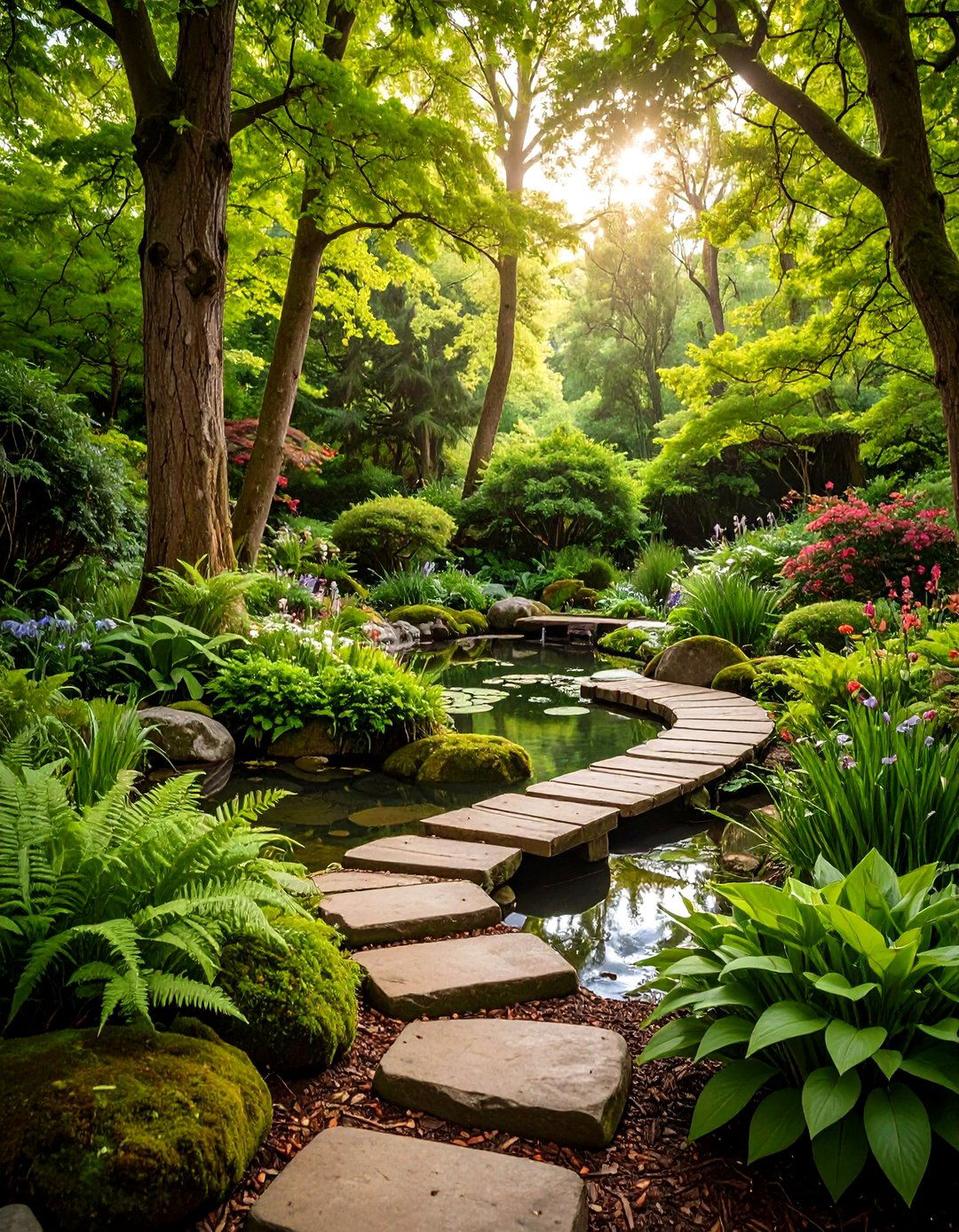
Woodland pond landscaping creates mystical forest environments featuring natural water features surrounded by shade-loving plants and forest floor materials that mimic natural woodland settings. This design style works particularly well under mature trees where traditional sun gardens struggle, using the dappled light to create atmospheric effects on water surfaces. Native woodland plants like ferns, hostas, wild ginger, and trillium create lush understory plantings that provide habitat for woodland creatures. The pond design follows natural contours and often includes fallen logs, moss-covered stones, and seasonal wildflower displays that change throughout the year. Materials include natural stone, wood chips, and leaf mold pathways that create authentic forest floor experiences. Water features might include gentle springs or seasonal streams that reflect the temporary nature of woodland water sources. This pond landscaping approach creates cool, peaceful retreats during hot summer months while supporting local ecosystems and providing educational opportunities for observing woodland wildlife and plant communities.
13. Contemporary Raised Pond Landscaping with Architectural Integration

Contemporary raised pond landscaping elevates water features to create dramatic architectural elements that integrate seamlessly with modern home designs and outdoor living spaces. This approach features ponds constructed above ground level using materials like concrete, steel, or stone that echo building materials and create strong visual connections between house and garden. The raised design allows for comfortable seating along pond edges while providing better fish viewing and easier maintenance access. Surrounding landscapes emphasize clean lines with structured plantings of ornamental grasses, architectural perennials, and specimen trees arranged in geometric patterns. Hardscaping elements include built-in seating, planters, and lighting systems that extend the pond's architectural character throughout the landscape. Water features often incorporate sophisticated technology like programmable fountains or color-changing LED systems that create dynamic evening displays. This pond landscaping style works particularly well in urban settings where space is limited but visual impact needs to be maximized, creating sophisticated outdoor rooms that feel like extensions of interior living spaces.
14. Victorian Formal Pond Landscaping with Period-Appropriate Features
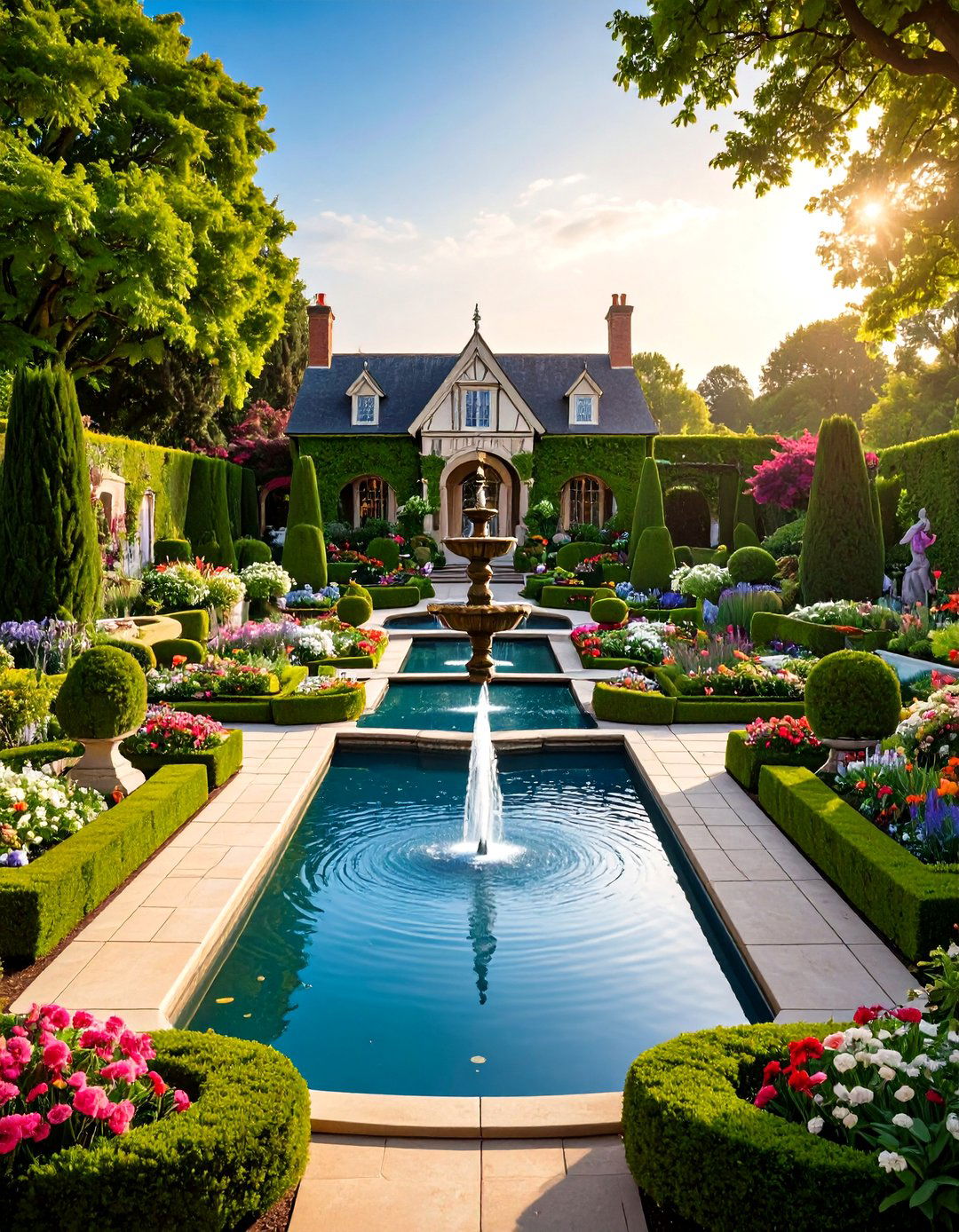
Victorian formal pond landscaping recreates the grandeur of 19th-century garden design with elaborate water features surrounded by ornate plantings and decorative elements that reflect historical garden traditions. This style features geometric pond shapes with ornamental edging materials like decorative concrete, cast iron, or intricately patterned tiles that showcase period craftsmanship. Surrounding gardens include formal bedding displays with seasonal flowers arranged in complex patterns, often featuring color schemes that change throughout the year. Traditional elements include ornate fountains, classical statuary, and decorative urns positioned as focal points within symmetrical layouts. Plant selections emphasize varieties popular during the Victorian era, including exotic specimens like tree ferns, palm trees, and tropical plants that were status symbols of the period. Pathways consist of formal materials like brick or ornate pavers laid in decorative patterns. This pond landscaping approach requires significant maintenance but creates historically accurate outdoor spaces that serve as living museums of garden design history.
15. Naturalistic Stream Pond Landscaping with Flowing Water Connections
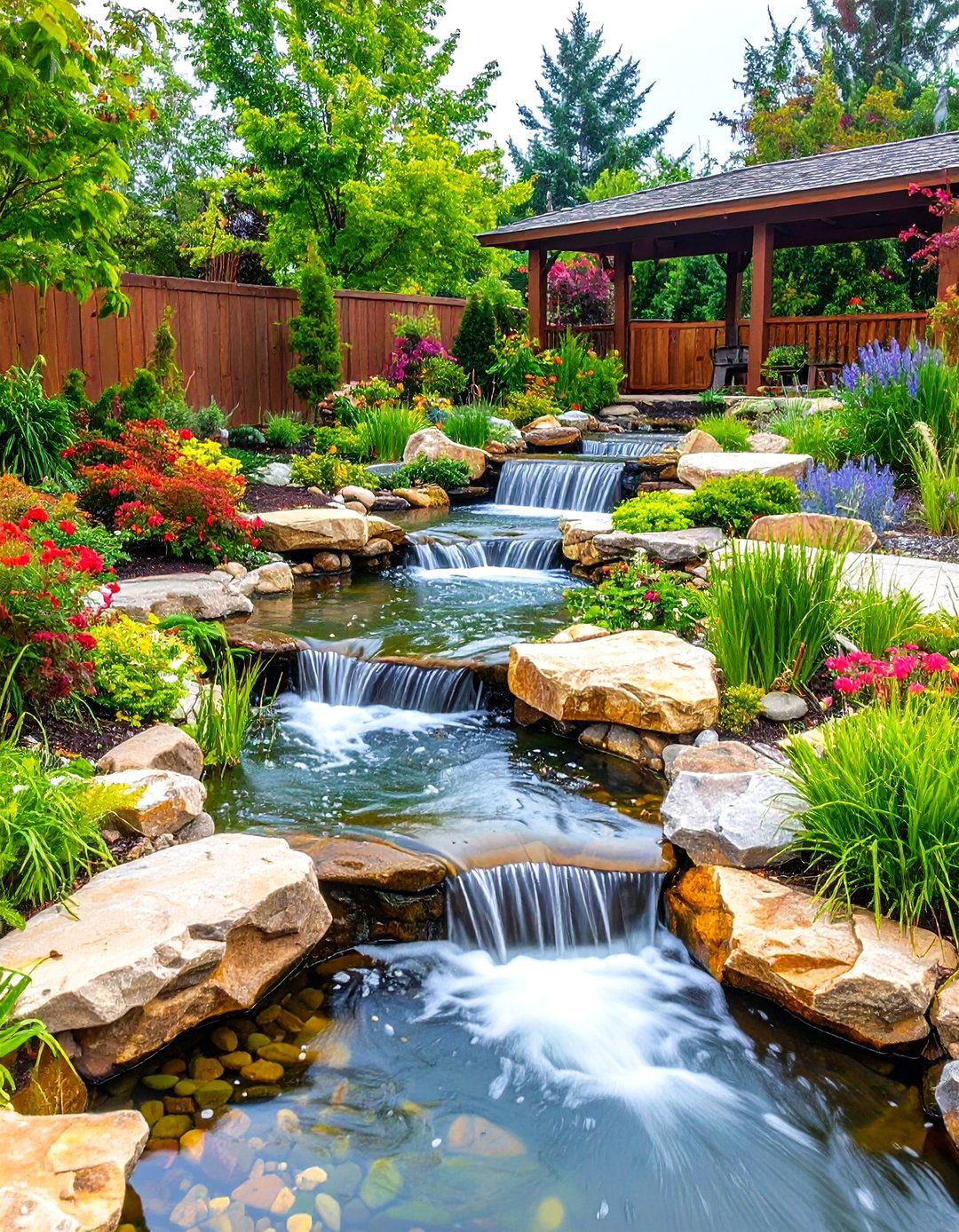
Naturalistic stream pond landscaping creates the illusion of natural waterways by connecting multiple pools with flowing streams that meander through carefully designed landscapes. This approach features irregular pond shapes connected by shallow channels that follow natural contours and create habitat diversity for aquatic life. The design incorporates varying water depths, flow rates, and substrate materials that support different plant and animal communities throughout the water system. Surrounding landscapes feature native plants arranged in natural-looking groupings that would occur near wild streams and ponds. Natural materials like river rocks, driftwood, and native stone create authentic channel features while providing basking and hiding spots for wildlife. Multiple small waterfalls or rapids between pools create movement and sound while aerating the water naturally. This pond landscaping style requires careful planning to ensure proper water circulation but creates dynamic outdoor environments that change with seasons and provide endless opportunities for wildlife observation and photography.
16. Container Water Garden Pond Landscaping for Small Spaces
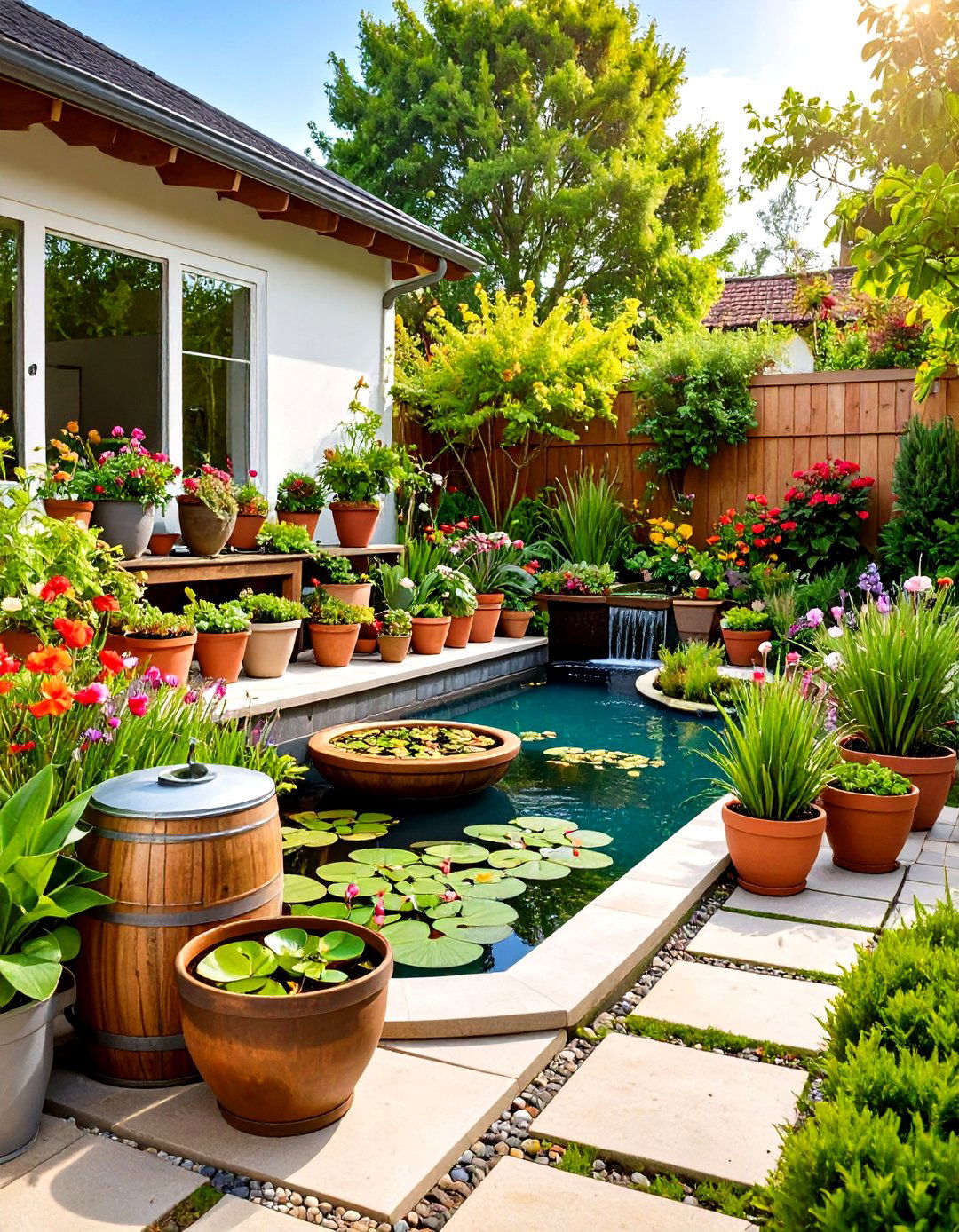
Container water garden pond landscaping maximizes limited space by using creative vessel arrangements that bring water features to patios, balconies, and small courtyards. This approach features multiple containers of varying sizes and heights arranged to create tiered water displays with connecting spillways or independent water features. Container choices range from traditional ceramic pots to contemporary metal vessels, wooden barrels, or repurposed architectural elements that add character and personal style. Aquatic plant selections emphasize compact varieties like dwarf water lilies, water hyacinth, and small floating plants that provide complete ecosystems within limited space. Surrounding areas feature additional container gardens with complementary plants that create cohesive outdoor rooms. Portable elements allow for seasonal rearrangement and winter protection in cold climates. This pond landscaping style offers flexibility and affordability while providing all the benefits of water gardening in urban environments where permanent installations may not be practical or permitted.
17. Rustic Country Pond Landscaping with Reclaimed Materials
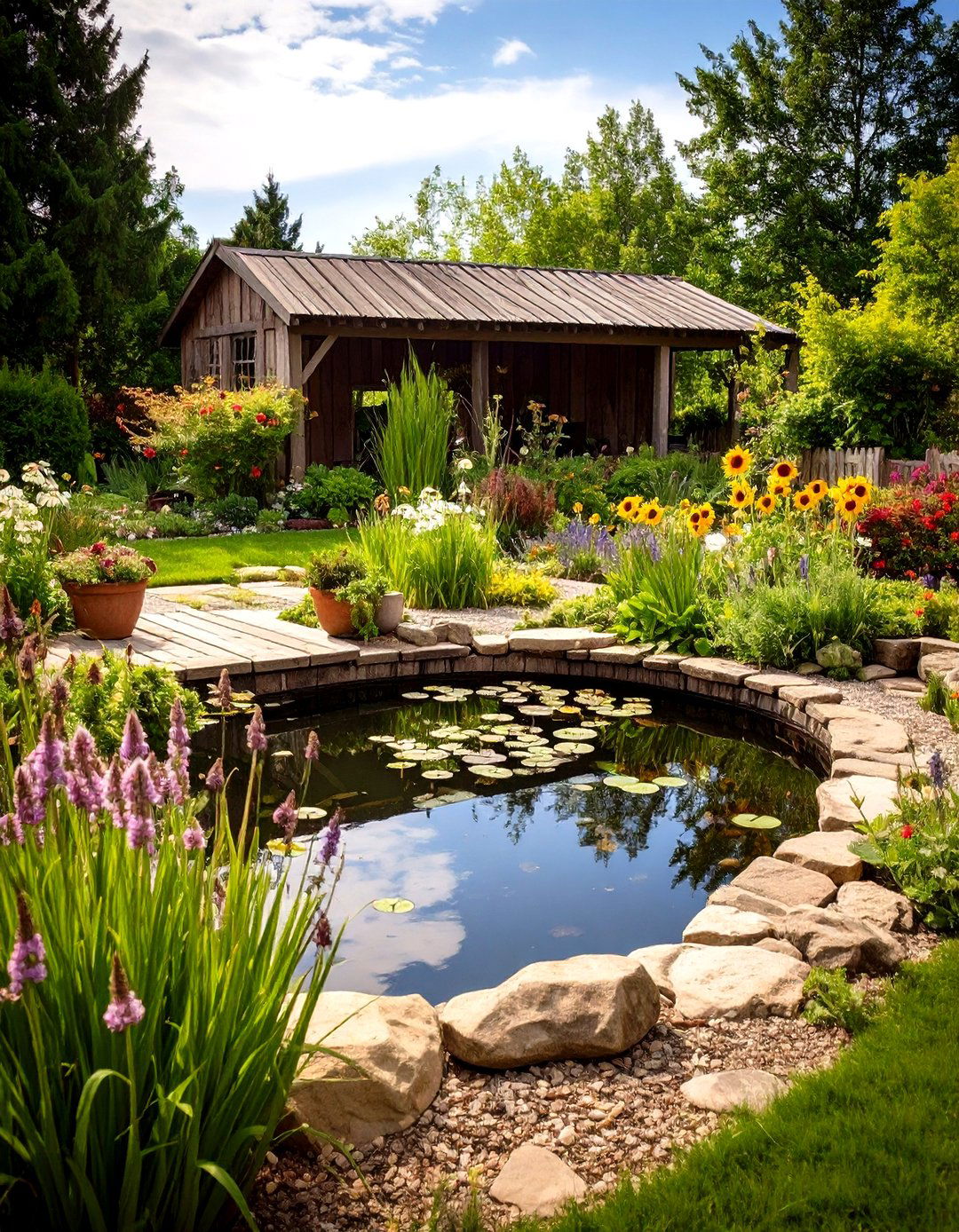
Rustic country pond landscaping embraces weathered materials and informal designs that create authentic farmhouse and rural character in outdoor settings. This style features natural pond shapes surrounded by reclaimed materials like weathered barn wood, vintage metal elements, and aged stone that tell stories of agricultural heritage. The design often incorporates functional elements like old water troughs, millstones, or farm equipment repurposed as decorative features that add historical character. Surrounding plantings emphasize heritage varieties and traditional country garden plants like sunflowers, zinnias, and vegetable gardens that reflect rural self-sufficiency values. Pathways consist of simple materials like gravel, wood chips, or stepping stones that maintain the informal country atmosphere. Water features might include hand-pumped wells, windmill-powered circulation, or simple spillways that reflect traditional water management techniques. This pond landscaping approach appeals to gardeners who value authenticity and sustainability while creating outdoor spaces that feel connected to agricultural traditions and simpler times.
18. Modern Minimalist Pond Landscaping with Essential Elements
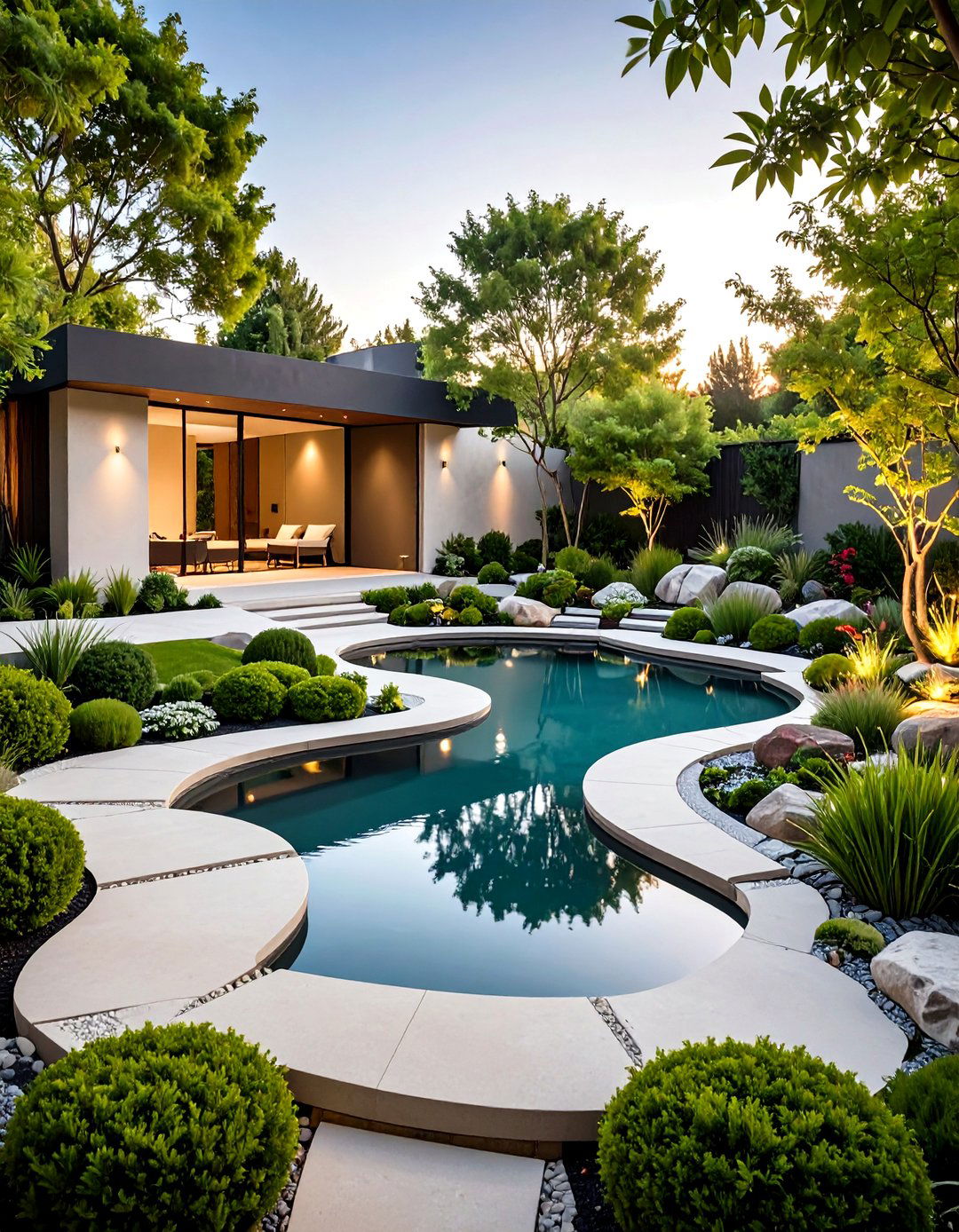
Modern minimalist pond landscaping focuses on essential elements and clean design principles that create sophisticated outdoor spaces with maximum visual impact using minimal components. This approach features simple pond shapes with crisp edges surrounded by carefully selected materials and plants that serve multiple functions within the design. The color palette remains limited, typically featuring neutral tones with occasional accent colors that create focal points without overwhelming the composition. Plant selections emphasize architectural forms and year-round structure rather than seasonal color displays, often featuring single species planted in mass groupings. Hardscaping elements include high-quality materials like natural stone, concrete, or metal used sparingly but effectively to create strong design statements. Water features remain subtle, perhaps featuring gentle overflows or still reflecting surfaces that emphasize tranquility over drama. This pond landscaping style requires careful attention to proportion and detail but creates timeless outdoor spaces that feel spacious and calming even in small areas.
19. Butterfly Garden Pond Landscaping with Pollinator Plant Focus
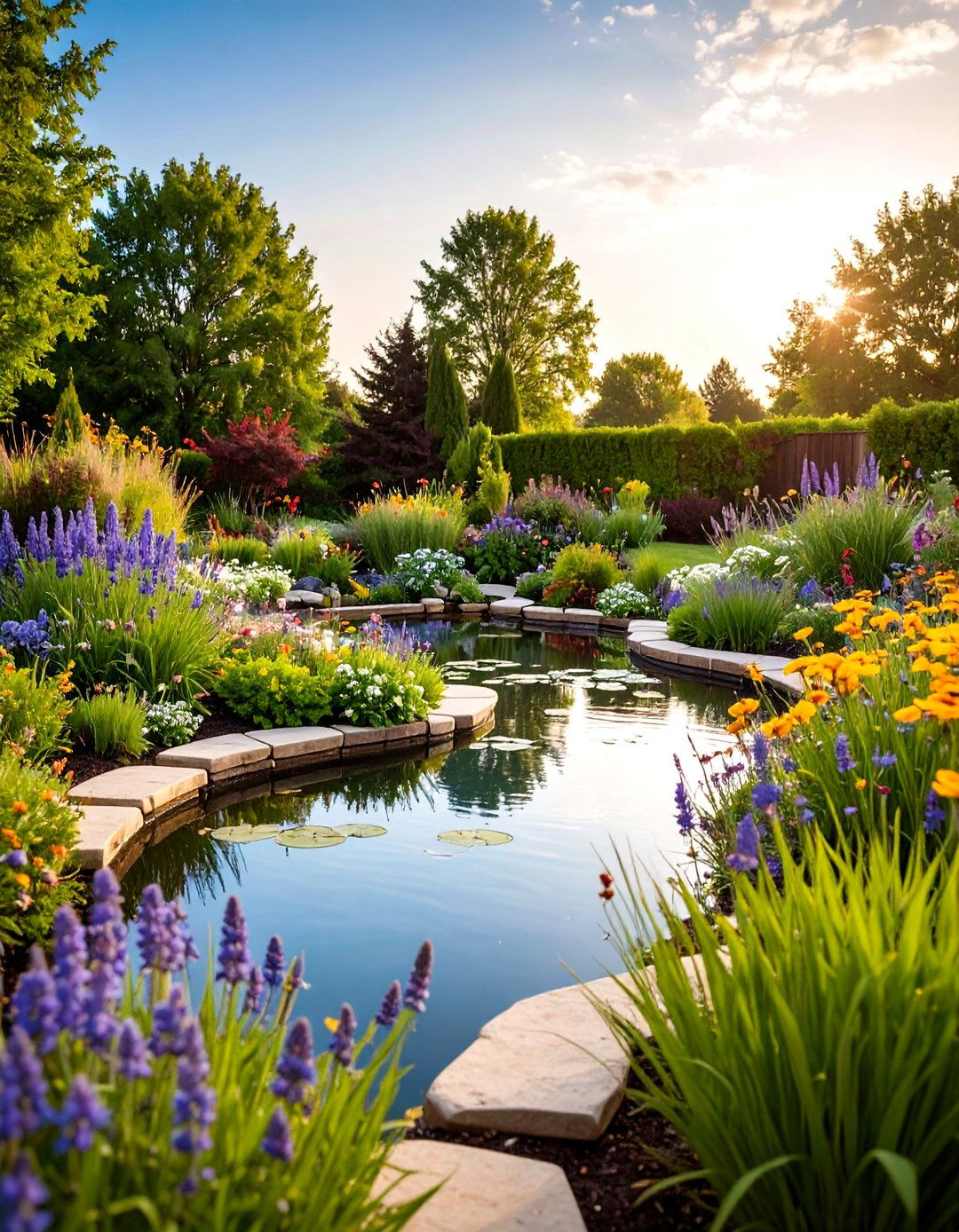
Butterfly garden pond landscaping creates habitat specifically designed to attract and support butterflies, bees, and other pollinators while providing beautiful water features that enhance garden enjoyment. This approach features shallow pond areas with gradual slopes that provide drinking spots for butterflies while deeper sections support aquatic life. Surrounding plantings emphasize native flowering plants arranged in drifts that bloom throughout the growing season, providing continuous nectar sources for visiting pollinators. Host plants for butterfly larvae receive prominent placement near seating areas where emerging butterflies can be easily observed. The design includes sunny protected areas with wind breaks and shallow puddles where butterflies can bask and obtain minerals. Pathways allow close observation without disturbing feeding insects while interpretive elements help identify visiting species. Maintenance practices avoid pesticides and emphasize organic methods that protect beneficial insects. This pond landscaping style creates dynamic outdoor classrooms that provide entertainment and education while supporting critical pollinator populations that benefit entire ecosystems.
20. Entertainment-Focused Pond Landscaping with Outdoor Living Integration
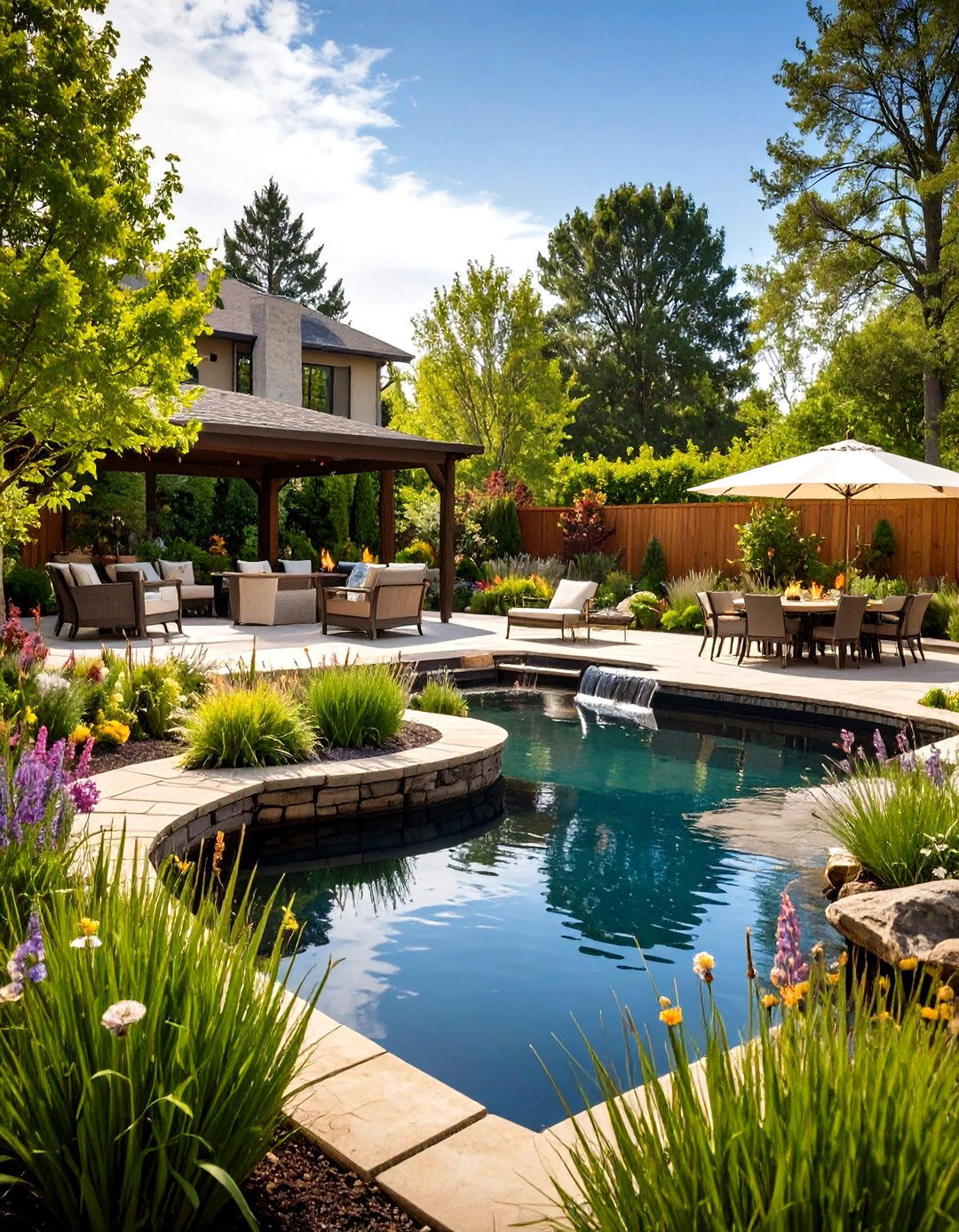
Entertainment-focused pond landscaping creates outdoor living spaces centered around water features that serve as focal points for social gatherings and family activities. This approach features ponds positioned adjacent to seating areas, outdoor kitchens, or entertainment spaces where water provides ambiance and conversation features. The design often includes multiple seating options at various distances from water, allowing for intimate conversations or larger group gatherings around pond features. Lighting systems create dramatic evening effects while providing safety and extending usable hours for outdoor entertainment. Sound systems can be discretely integrated to provide background music while water features provide natural sound masking for private conversations. Plant selections emphasize low-maintenance varieties that won't interfere with activities while providing seasonal interest and pleasant fragrances. The pond may include features like fire elements, serving areas, or interactive water displays that engage guests and create memorable experiences. This pond landscaping style transforms ordinary backyards into destination spaces that encourage outdoor living and create lasting memories with family and friends.
Conclusion:
The diverse world of pond landscaping offers endless possibilities for creating personalized outdoor sanctuaries that reflect individual style preferences and functional needs. From tranquil Japanese zen gardens to vibrant wildlife habitats, each design approach provides unique benefits while enhancing property value and outdoor enjoyment. Success depends on matching pond landscaping themes to specific site conditions, maintenance preferences, and lifestyle requirements. Consider starting with smaller projects to gain experience before tackling comprehensive installations. Professional consultation can help navigate technical requirements while ensuring designs achieve desired aesthetic and functional goals.


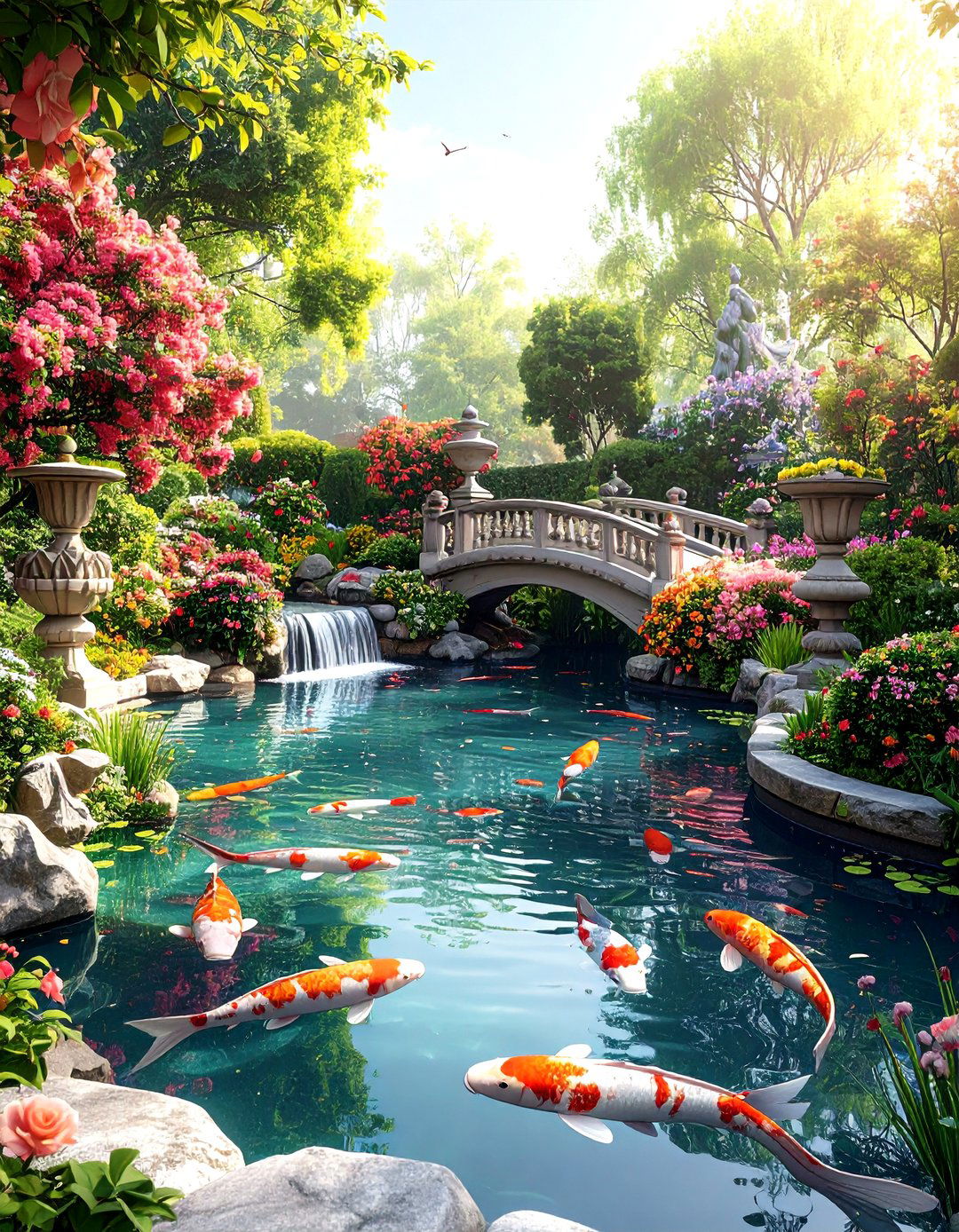
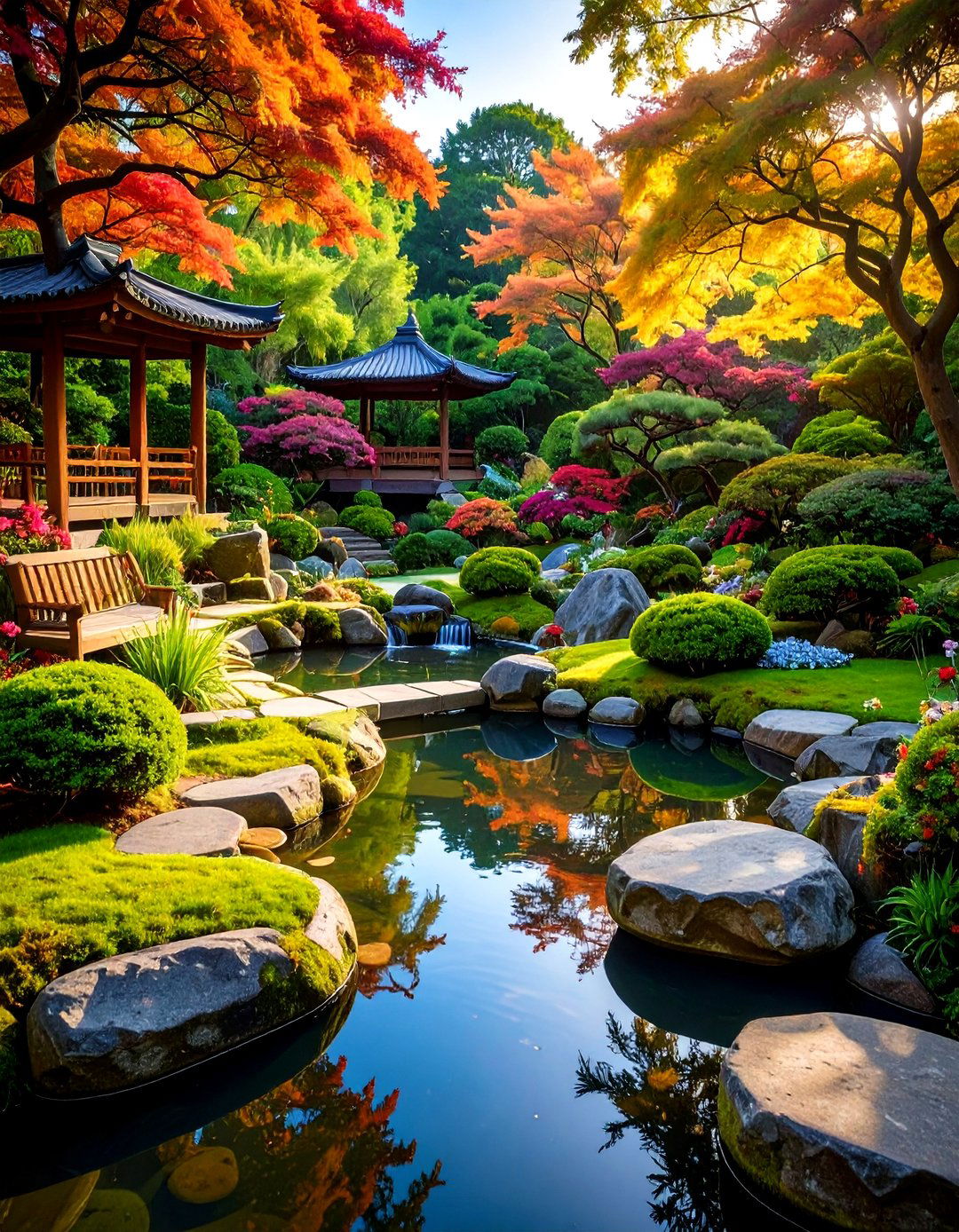
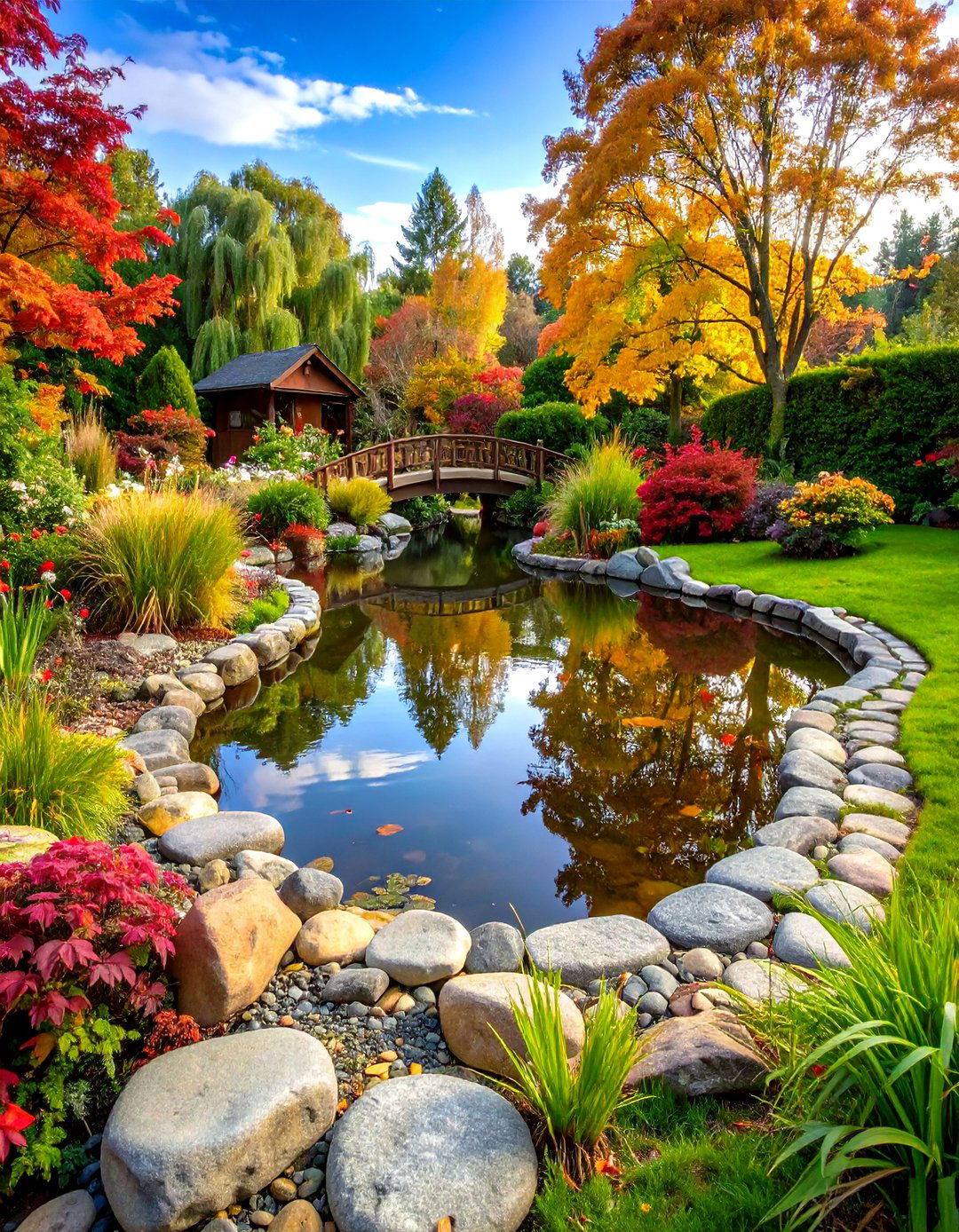


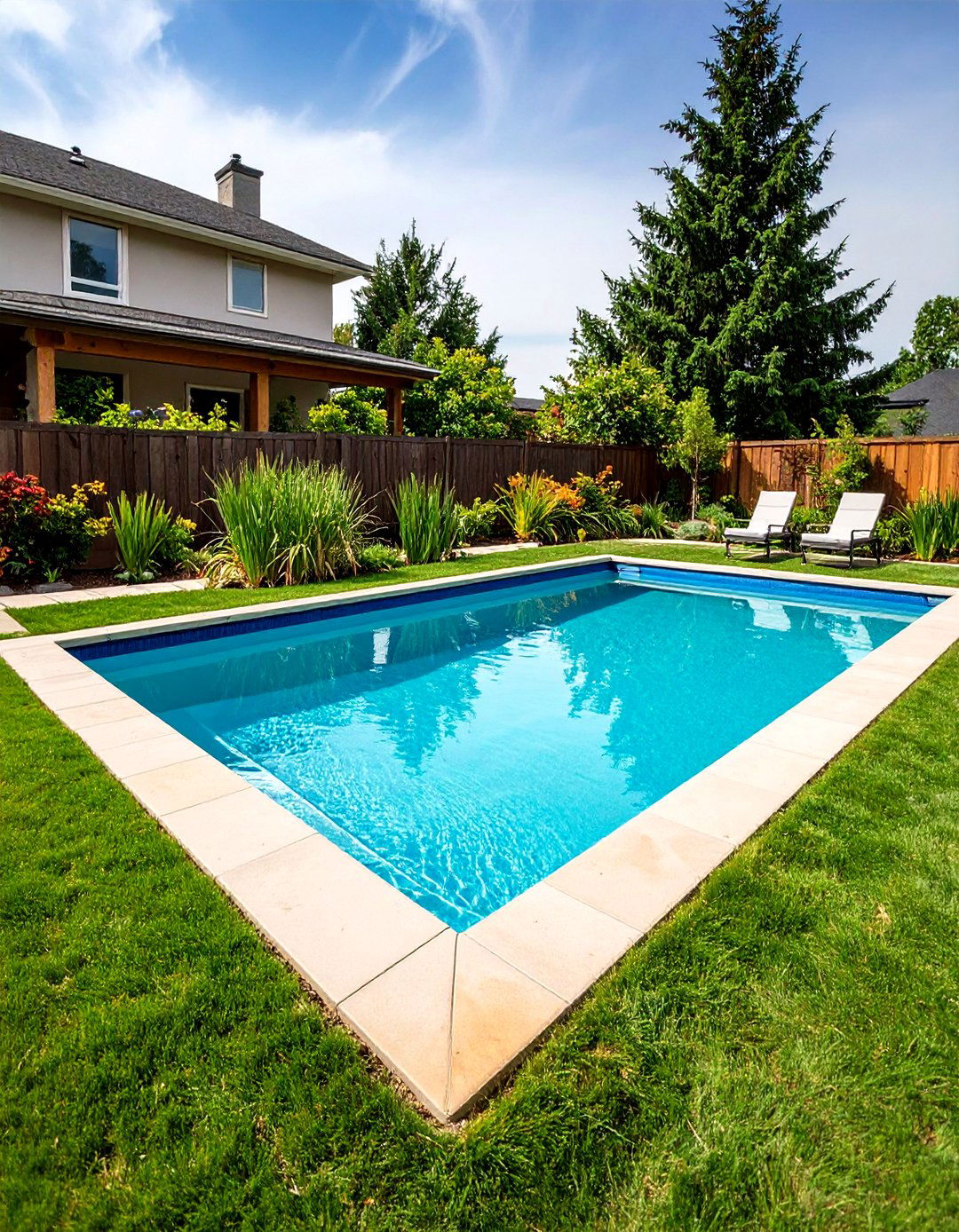
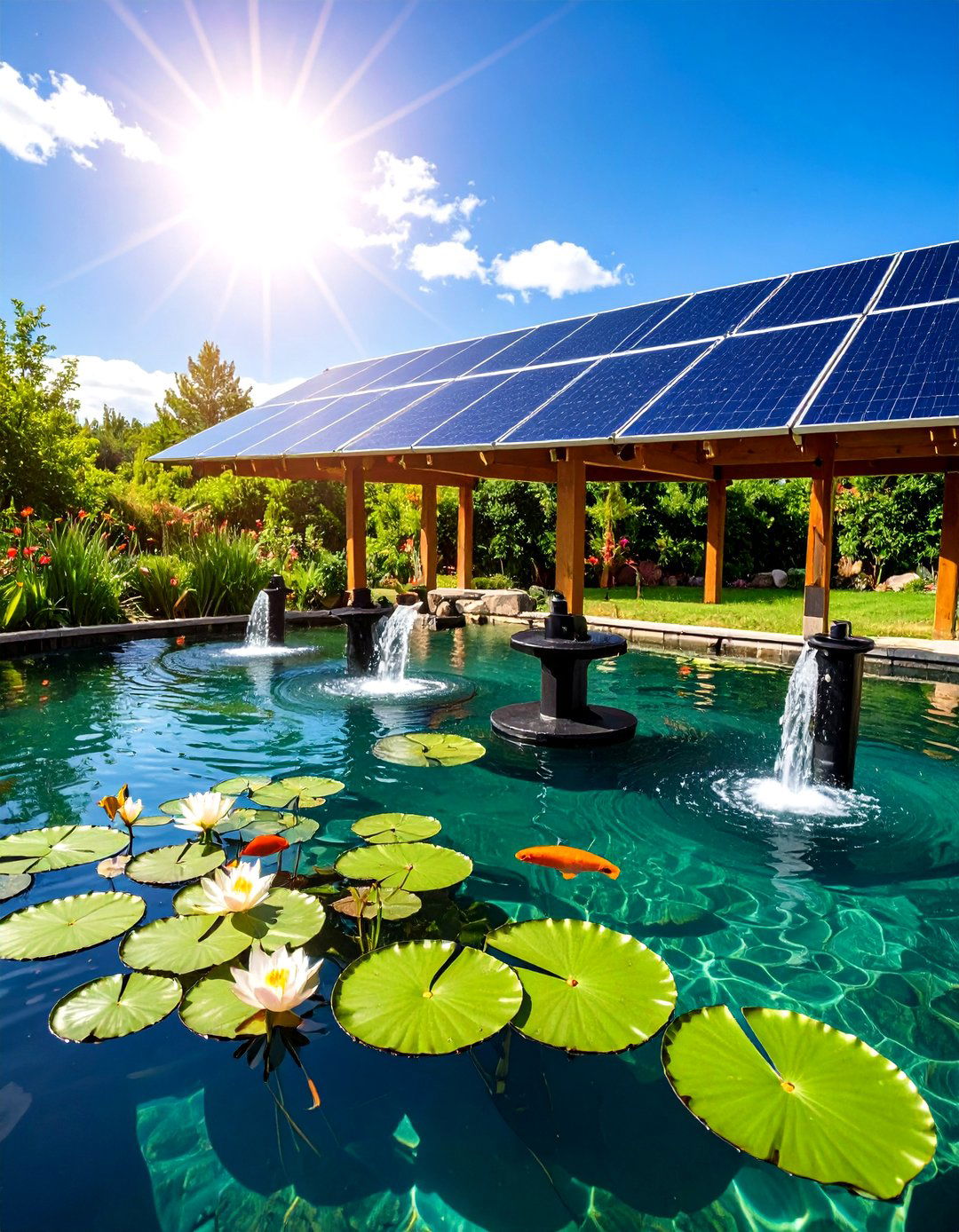
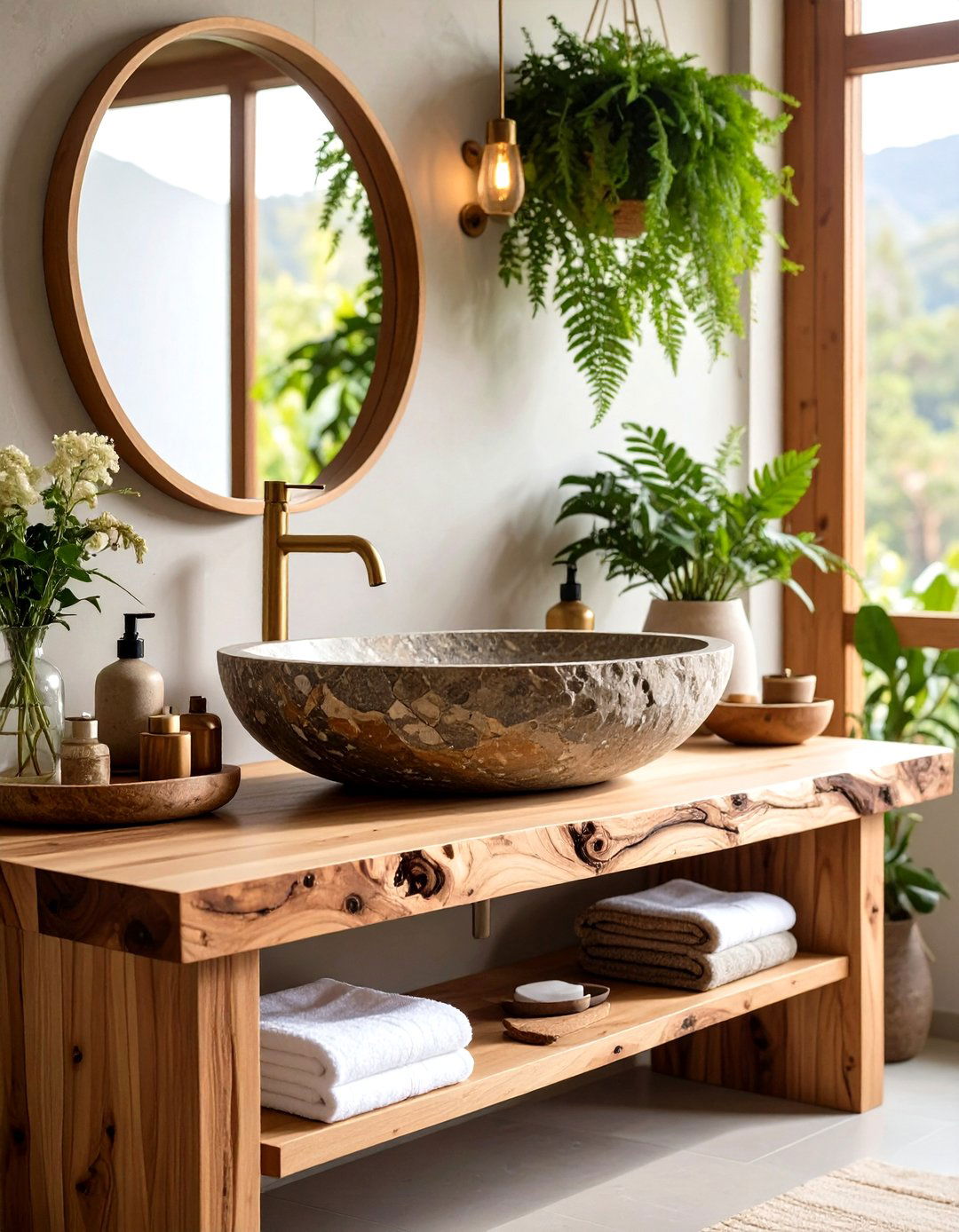
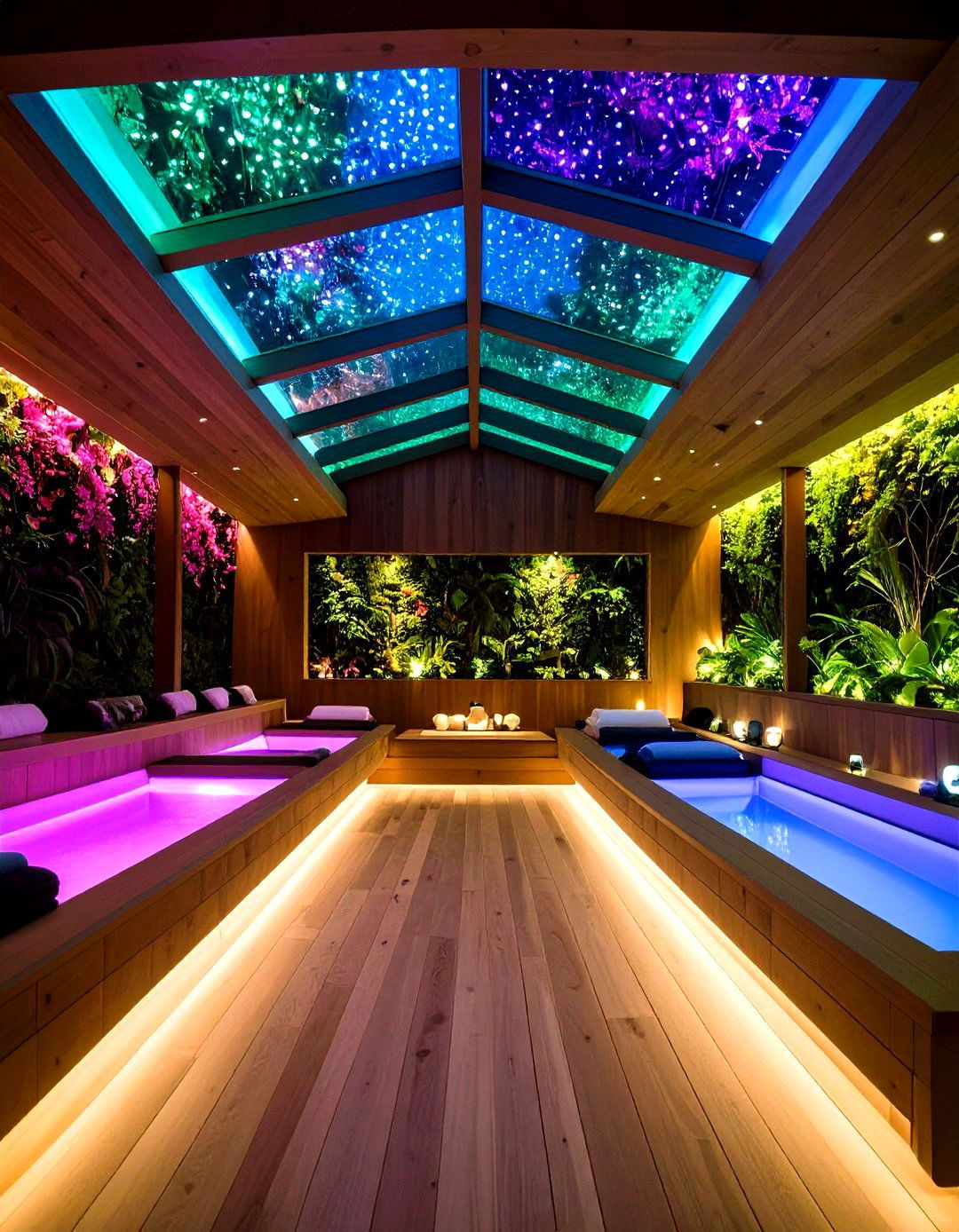
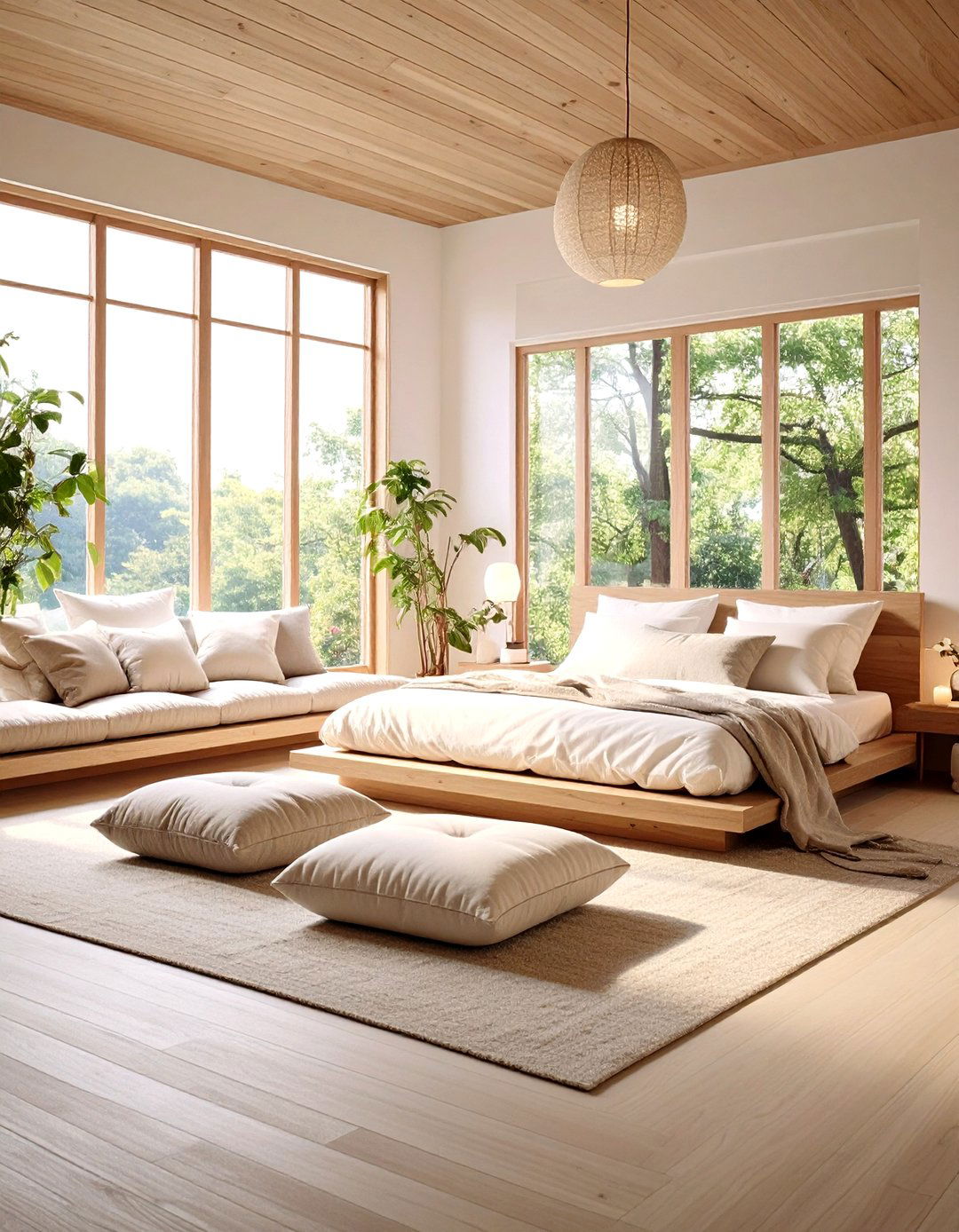
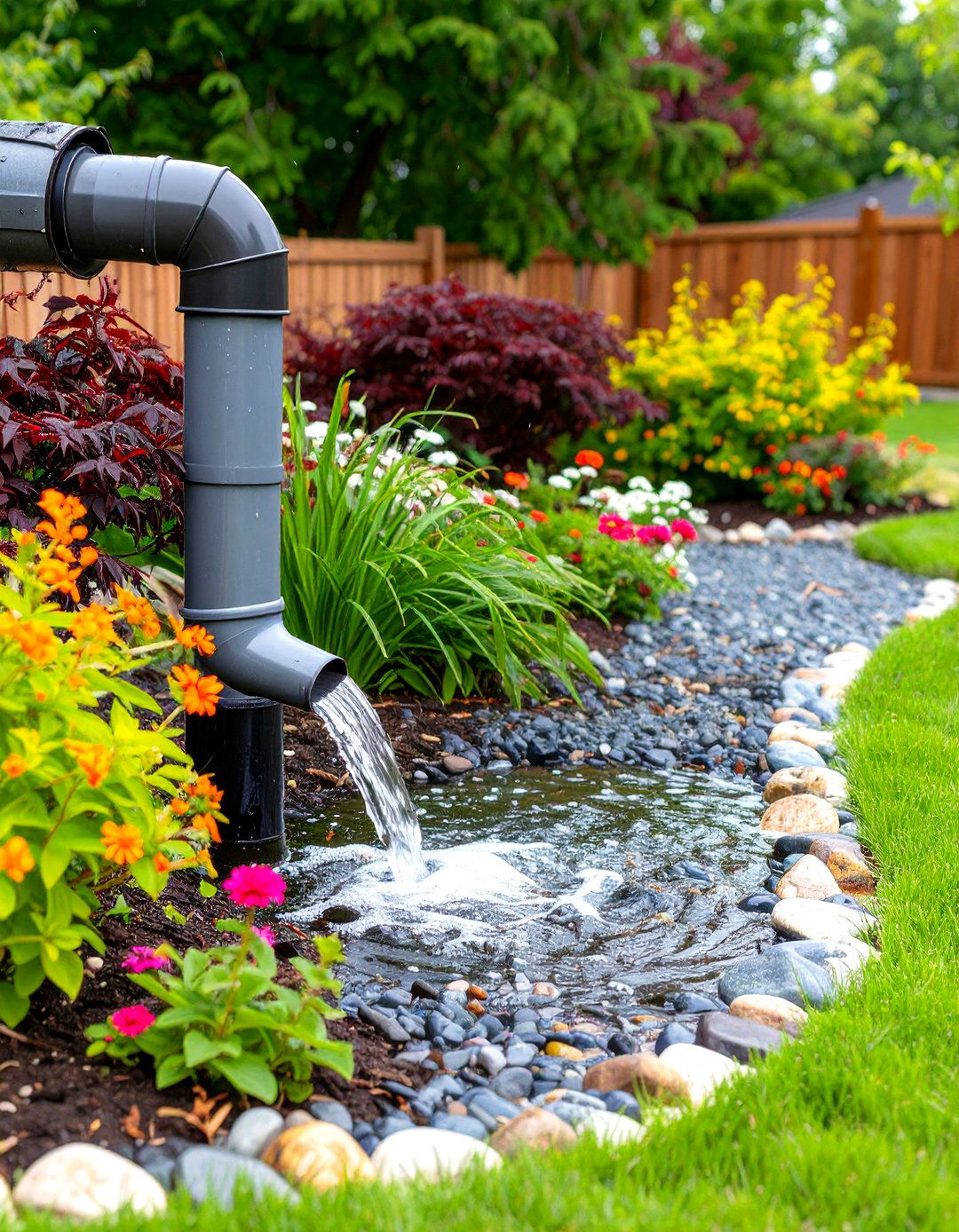
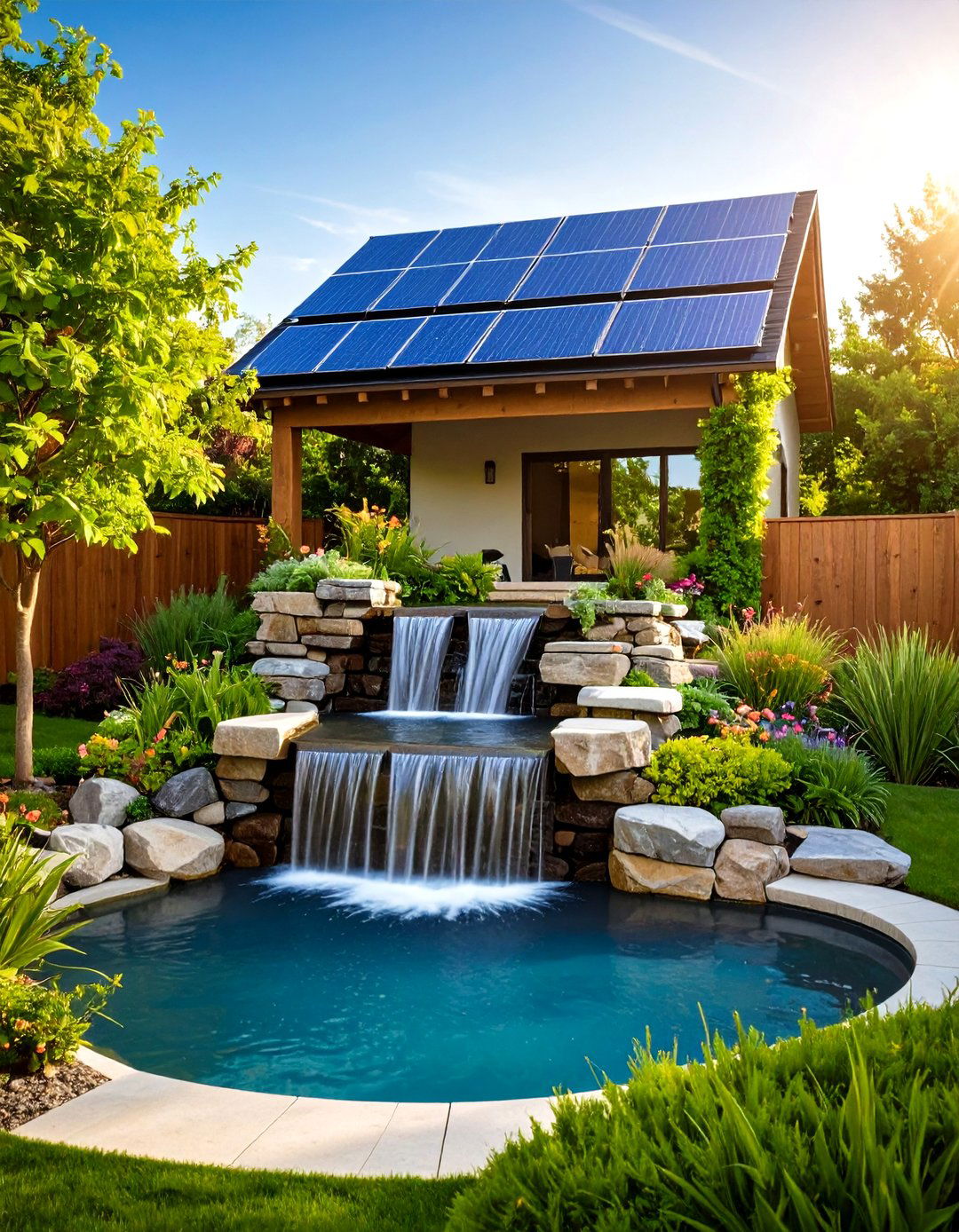
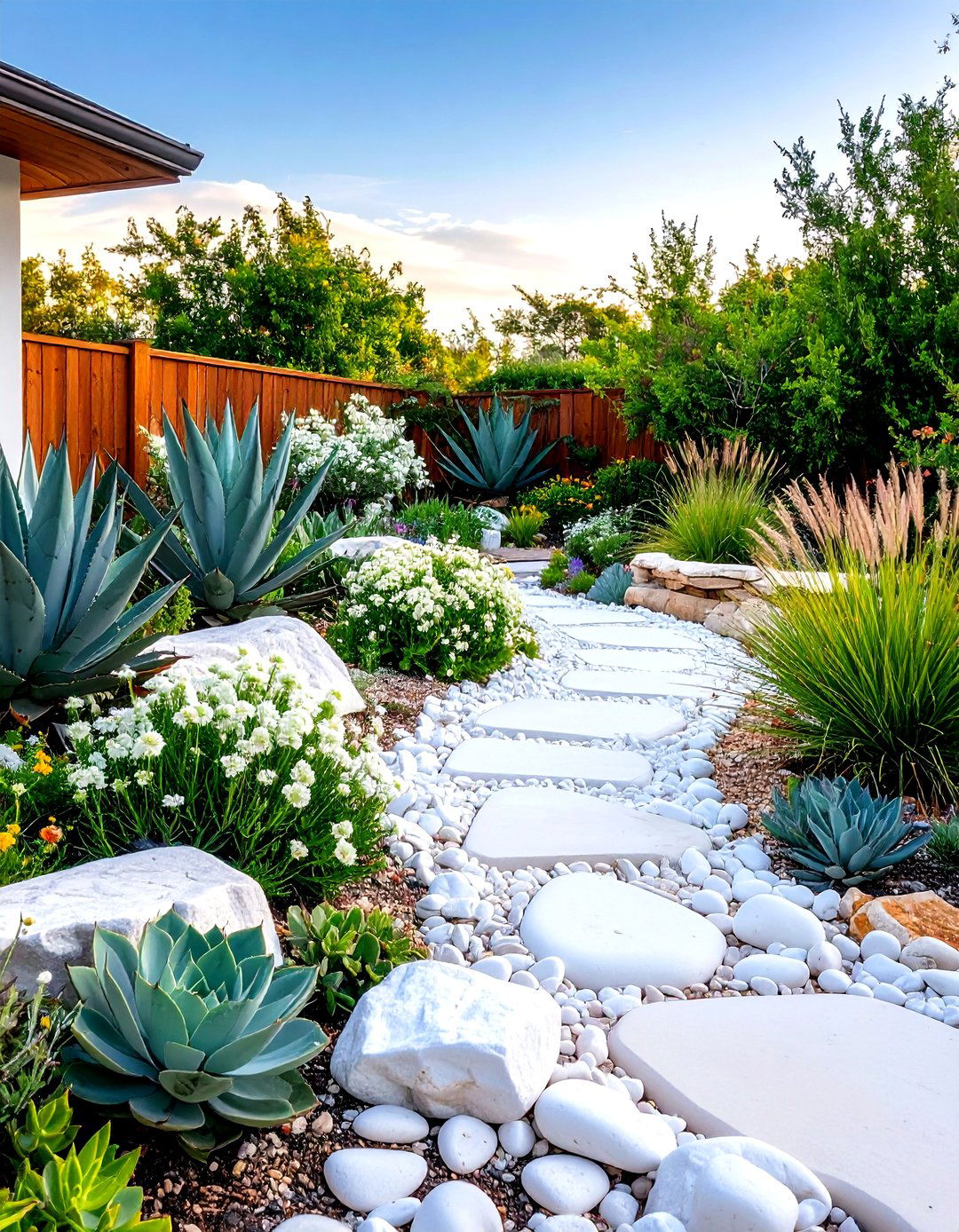
Leave a Reply